Shopify Marketing Tactics and Strategies You Can Use To Sell More
Once you learn how to automate your Shopify marketing process, sales start driving themselves.
It’s a wonderful process of trial and testing until you finally create a winning marketing strategy that will have you set for quite some time.
With all this in mind, this guide is going to be crucial for you if you want to learn how to promote your Shopify dropshipping products and brand.
Table of Contents
- What Is Shopify Marketing?
- Pre-Marketing Foundations for Shopify Stores
- Top 15 Shopify Marketing Strategies to Boost Sales
- The No. 1 Tool for all dropshippers – now with AI
- 9. Pinterest Marketing for Shopify Stores
- Strategies for Expanding Product Offerings and Entering New Markets
- Real Life Examples Of Succesful Shopify Marketing Strategy
- Why Shopify Marketing So Important? Top Trends & Opportunities
- Shopify Marketing FAQs (Frequently Asked Questions)
- 1. What are some pre-marketing foundations that Shopify store owners should consider?
- 2. How can Facebook marketing be leveraged for Shopify stores?
- 3. What are some strategies for scaling a Shopify business for long-term success?
- 4. What is the future landscape of Shopify marketing and key trends that businesses should be prepared to embrace?
- 5. What are some key tactics for email marketing specifically tailored for Shopify stores?
- 6. What is the importance of effective marketing for Shopify stores?
- Conclusion
What Is Shopify Marketing?
Effective marketing is crucial for the success of Shopify stores. It plays a pivotal role in increasing brand visibility, attracting potential customers, and driving sales.
In this article, I will explore various Shopify marketing tactics and strategies that can help store owners improve their sales performance.
Throughout the following sections, I will cover:
- Social media marketing: How to use platforms like Facebook, Instagram, and TikTok to promote your Shopify store.
- Email marketing: Strategies for leveraging email campaigns to engage with customers and drive repeat purchases.
- Google Ads optimization: Tips on maximizing the effectiveness of your Google Ads campaigns for better visibility.
- Building a strong foundation: The importance of establishing a clear brand identity and implementing SEO strategies tailored specifically for Shopify stores.
By implementing the insights provided in this article, readers can gain valuable knowledge on how to effectively market their Shopify stores and drive substantial growth in sales.
Pre-Marketing Foundations for Shopify Stores
First, let’s see what are the foundations of marketing that every Shopify store owner should consider.
Thus, here I will explore some key considerations that should be addressed.
👉 Check out the 14 Best eCommerce Merchandising Techniques for 2024.
Setting up a Facebook Business Page
One of the first steps in establishing a strong online presence is setting up a Facebook business page.
With over 3.07 billion monthly active users, Facebook provides an excellent platform for reaching and engaging with potential customers.
Therefore, here are some key features and strategies to consider:
You might want to try selling on Facebook Marketplace. First, it’s an online place where you can buy, sell, and trade things within your local area.
Since it’s part of Facebook, you can easily look through items or services from people or businesses nearby.

Next, you can search for specific items, filter by location or category, and chat with sellers or buyers through Facebook Messenger.
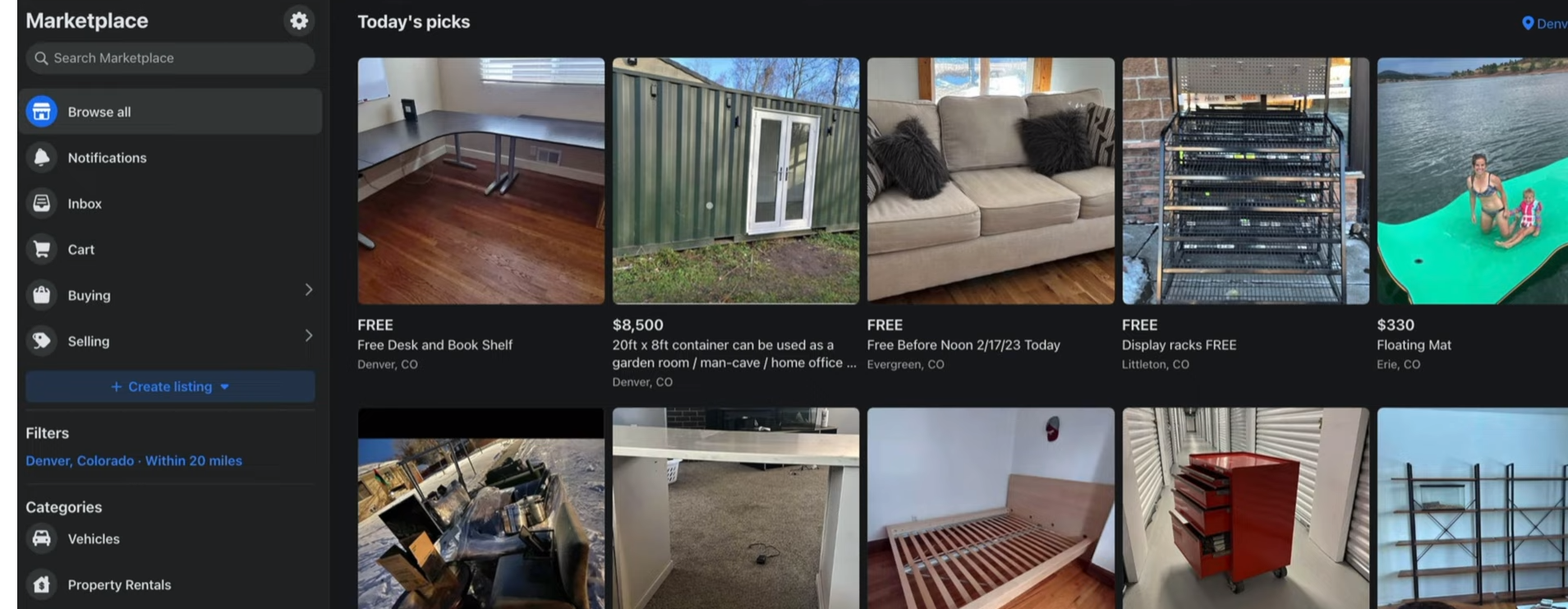
Additionally, Facebook Marketplace uses Facebook’s advertising tools, giving you more ways to promote your products and reach more people. The cost of ads is up to you, but they typically range from $0.50 to $2 per click.
On average, the cost per click (CPC) across all industries is about $1.72.
Tracking Relevant Data Metrics
To make informed marketing decisions and optimize your Shopify store’s performance, it’s crucial to track relevant data metrics. Here are some key metrics to monitor:
Website Traffic
Keep an eye on how many people are visiting your store and where they are coming from.
This information can help you identify which marketing channels are driving the most traffic and where you might need to invest more effort.
For example, Ahrefs helps me explore data about my website traffic and performance.

Conversion rate
With this ecommerce KPI, you can measure the percentage of website visitors who complete a desired action, such as making a purchase or signing up for a newsletter.
Tracking your conversion rate can help you identify areas of improvement in your sales funnel and optimize for higher conversions.
For example, Google Analytics is one of the most powerful web analytics platforms available. It can help you track various ecommerce metrics like conversion rate, average order value (AOV), and website traffic sources.

Customer acquisition cost (CAC)
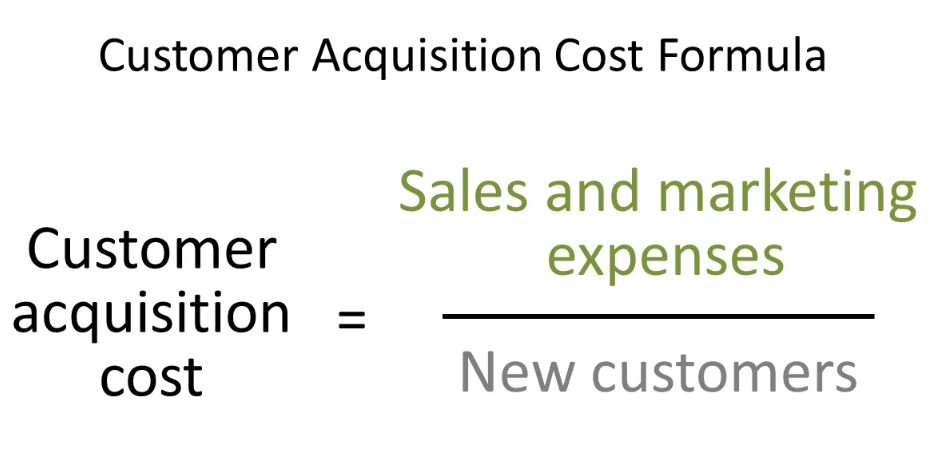
Calculate how much it costs you to acquire a new customer through your marketing efforts.
This metric is important for determining the profitability of your marketing campaigns and allocating your budget effectively.
Also, you can make sure you’re not spending more to acquire a customer than they’re worth over their lifetime relationship.
Social media engagement
You need to monitor the engagement on your social media channels, such as likes, comments, shares, and clicks. This data can provide insights into the effectiveness of your content and help you refine your social media strategy.
To track these metrics, consider using analytics tools like Facebook Pixel, or Shopify’s built-in analytics dashboard.
For example, I personally find Facebook Pixel really helpful. It tracks user interactions with your Facebook ads and website, giving you valuable data on ad performance and conversion rates.
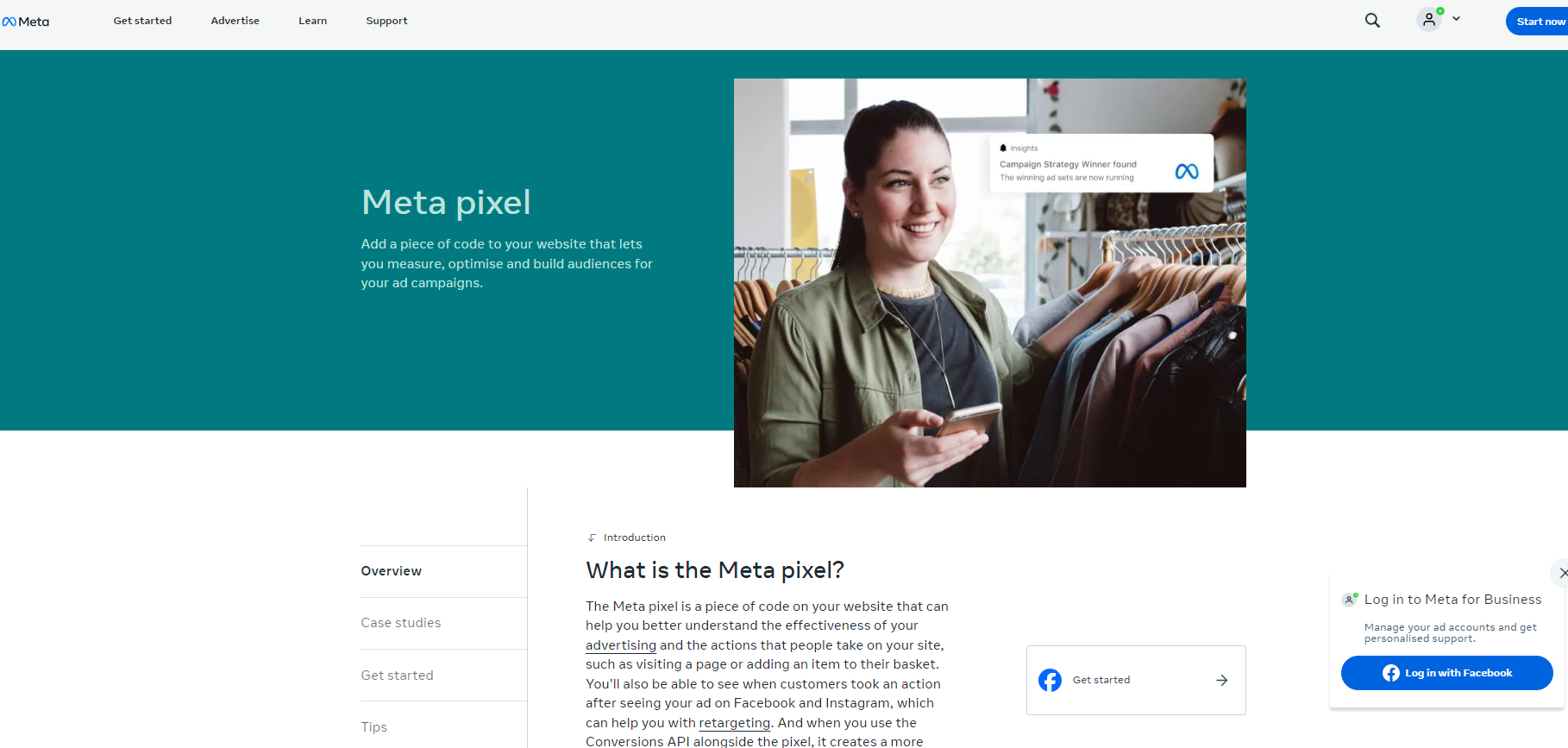
These tools provide valuable insights into your store’s performance and allow you to make data-driven decisions.
Establishing a Strong Brand Identity
A strong brand identity is crucial for standing out in a competitive marketplace and attracting loyal customers. Here are some key considerations when establishing your brand identity:
- Defining your target audience: Clearly identify who your ideal customers are based on factors such as demographics, interests, and pain points. Understanding your target audience will help you tailor your marketing messages and create content that resonates with them.
- Crafting a compelling brand story: Develop a unique brand story that communicates the values, mission, and personality of your business. Your brand story should be authentic and emotionally resonate with your target audience.
- Consistent visual branding: Create a cohesive visual identity by using consistent colors, fonts, and imagery across all touchpoints – from your website to social media profiles to packaging. Consistency helps reinforce brand recognition and builds trust with your audience.
- Voice and tone: Define the tone of voice that aligns with your brand’s personality and resonates with your target audience. Whether it’s friendly, professional, or humorous, be consistent in your communication style across all channels.
For example, there are many Shopify apps to help with logo creation and choosing colors. You can also use Canva to design your own logo. 👇

Ensure your branding is consistent across all your marketing channels. This includes your website, social media profiles, packaging, and shipping materials.
Moreover, if you want to build a strong brand, you can also try POD services.
For instance, Shopify integrates with Printful with ease. Plus, with their mockup generator, you can customize your products however you want.
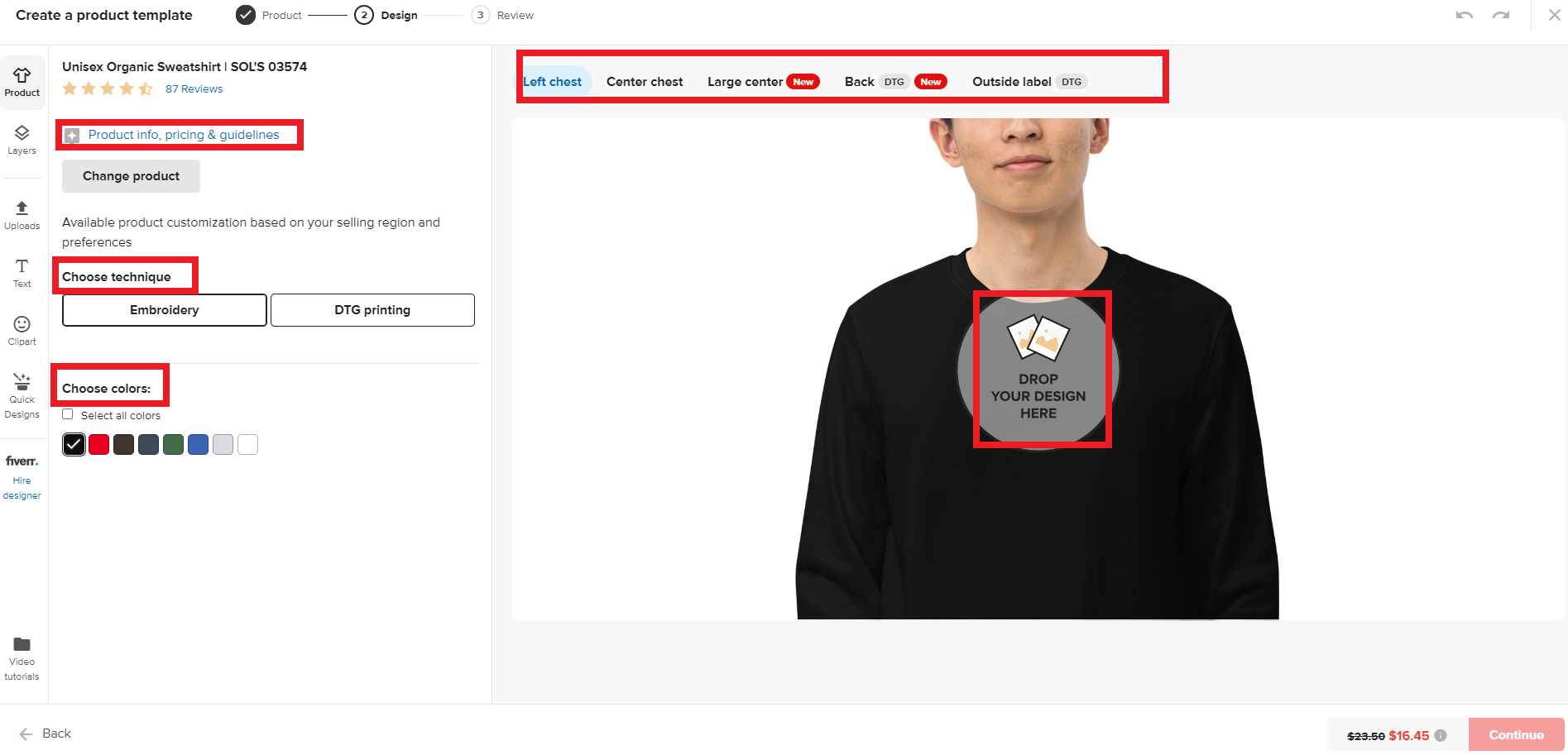
Build a Foundation of Organic Traffic through SEO Strategies
While paid advertising can be effective, building a foundation of organic traffic through search engine optimization (SEO) is a long-term strategy that can drive consistent traffic to your Shopify store.
Here are some key SEO strategies tailored for Shopify stores:
Keyword research
Identify relevant keywords that your target audience is using to search for products or services similar to yours.
For example, you can use tools like Google Keyword Planner or SEMrush to find high-volume, low-competition keywords.
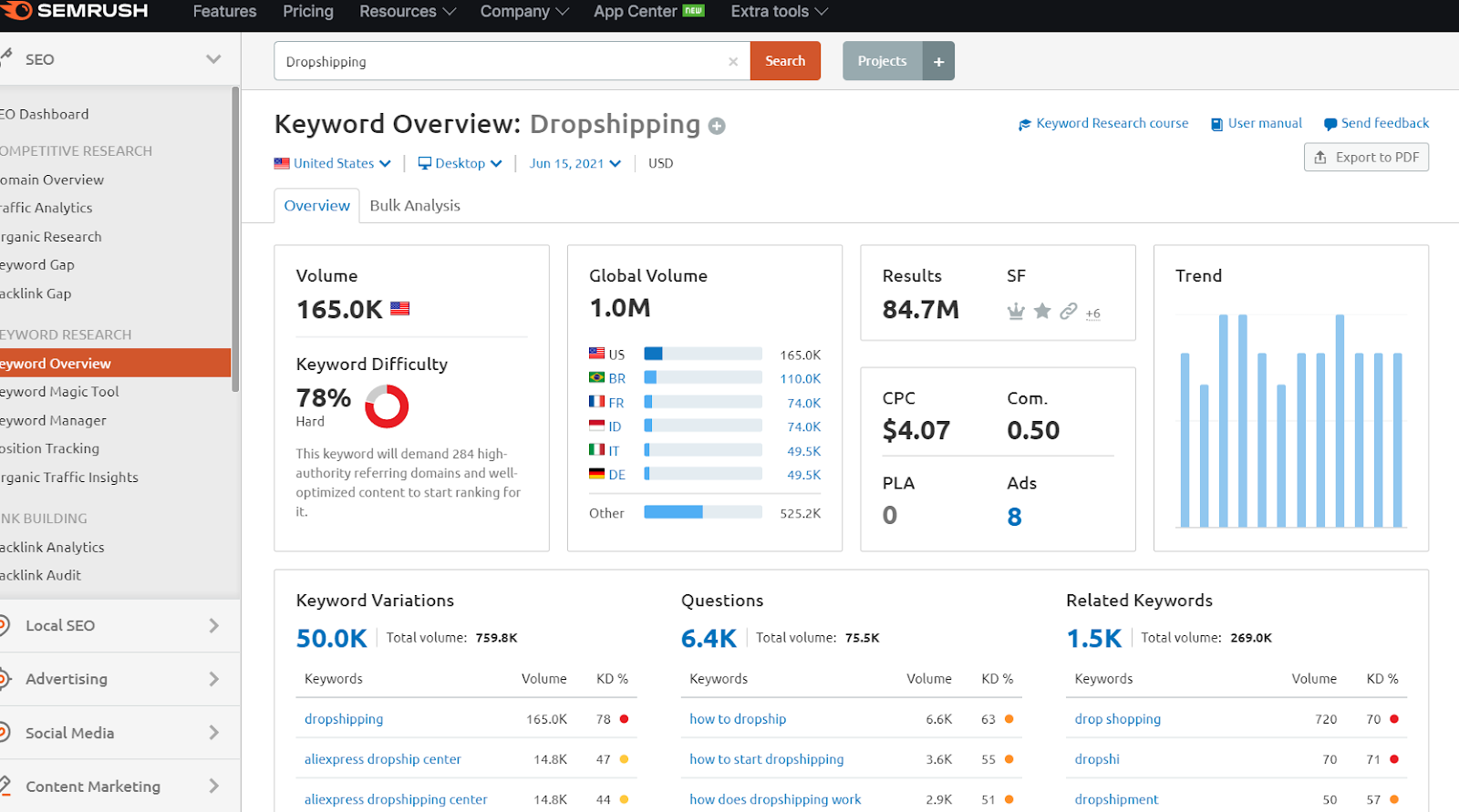
On-page optimization
Optimize your Shopify store’s on-page elements such as meta titles, meta descriptions, URL structure, header tags, and product descriptions.
For example, you can use AI tools to give you ideas, or even write you stunning SEO-friendly meta descriptions, titles, etc.
I use ChatGPT prompts to help me write SEO-friendly titles and meta descriptions. Let’s give it a try for my New York dropshipping article. 👇
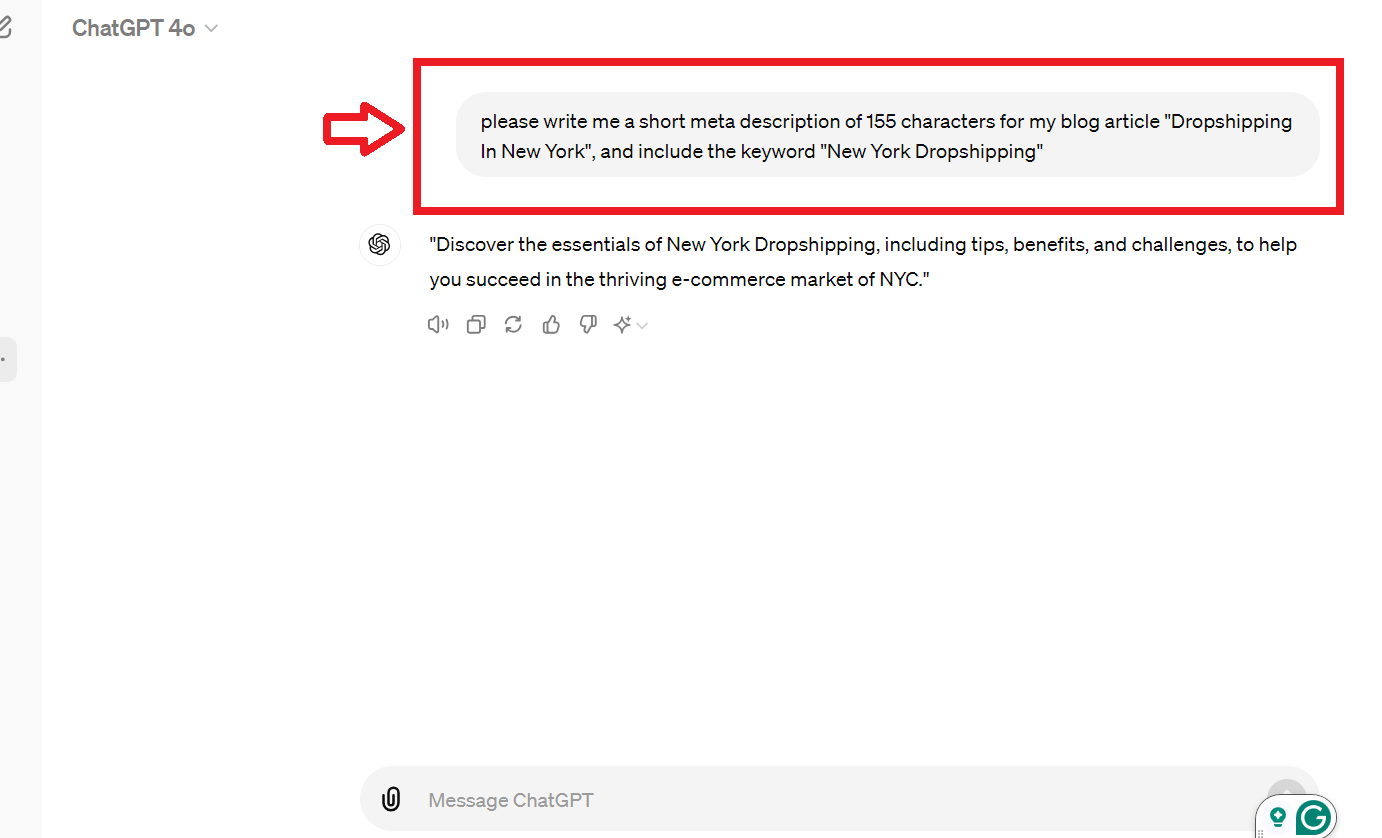
Moreover, make sure you incorporate relevant keywords naturally while ensuring readability for both users and search engines.
Quality content creation
Create high-quality blog posts, guides, and product descriptions that provide value to your target audience.
For example, Beavertown Brewery’s blog is a great example of combining great design with smart content strategy. The blog has a clean, modern look that’s easy to navigate.
They use the GemPages page builder to create a unique experience for readers.
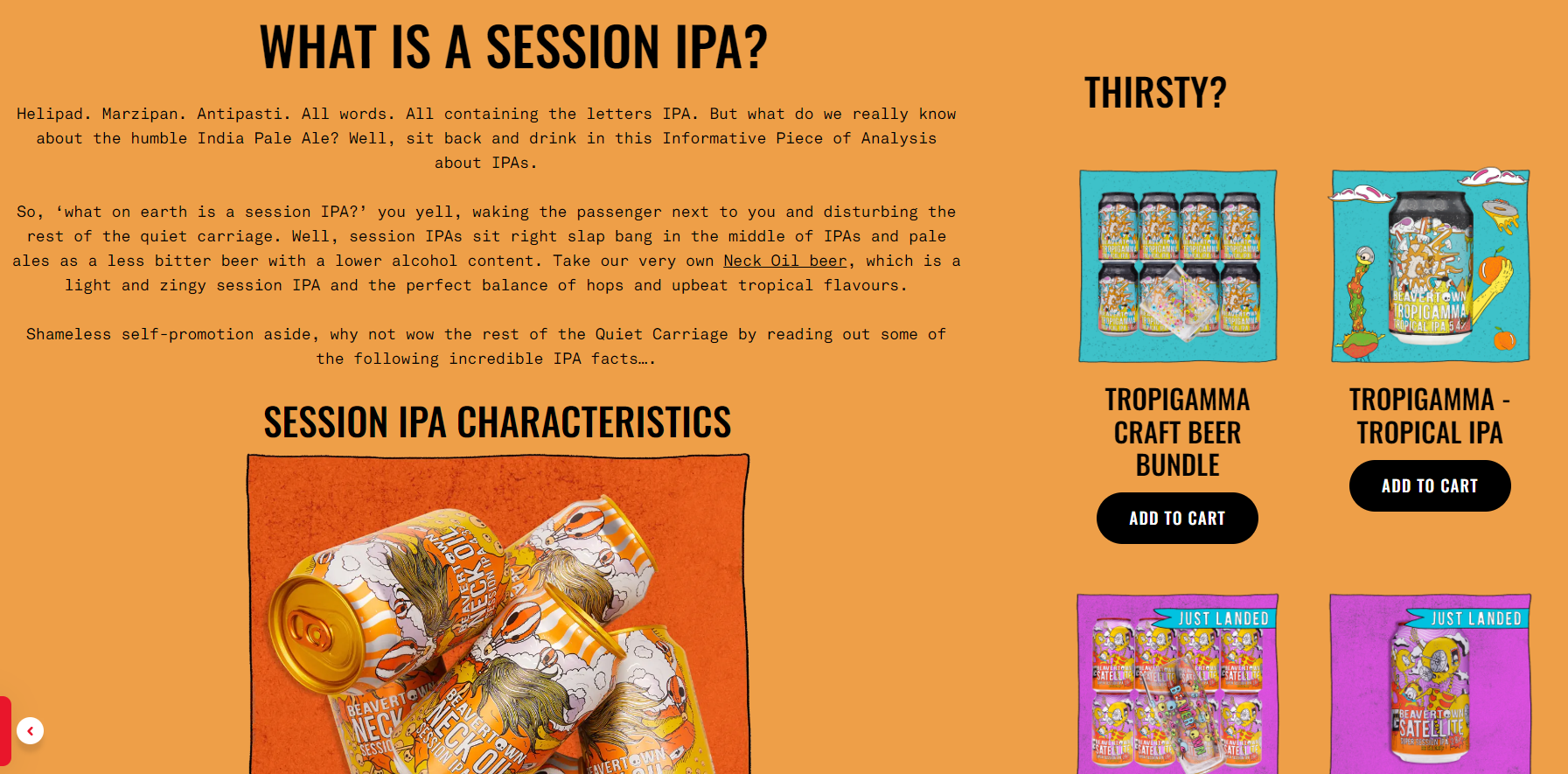
A standout feature is how they personalize their posts. They understand that existing customers and new visitors have different interests, so they tailor content to fit both groups.
This makes each reader feel the blog is speaking directly to them, boosting engagement. Plus, I love their call-to-action buttons over their blog article. Hence, the “add to cart” buttons here can really increase your sales.
Their blog also stands out with its chic style. Instead of a plain white background, they use an eye-catching orange one and include high-quality photos throughout.
Also, focus on producing informative and engaging content that addresses their pain points and positions you as an authority in your niche.
Link building
Build backlinks from reputable websites within your industry to improve your store’s authority and visibility in search engine rankings.
So, guest posting, influencer collaborations, and reaching out to industry blogs are effective ways to acquire quality backlinks.
For example, if you need to find bloggers or influencers to collaborate with, the Ninja Outreach tool can assist you in connecting with them.

By laying these pre-marketing foundations for your Shopify store, you’ll set yourself up for success in implementing various marketing tactics and strategies.
Remember, effective marketing requires a solid groundwork that aligns with your target audience’s needs and preferences.
Top 15 Shopify Marketing Strategies to Boost Sales
In today’s digital age, Facebook has become one of the most powerful marketing platforms for businesses, including Shopify stores.
Thus, with its vast user base and advanced targeting capabilities, Facebook offers numerous opportunities to connect with potential customers and drive sales.
So, here are some effective Facebook marketing tactics that Shopify store owners can implement to boost their sales:
1. Leverage Facebook Ads
One of the key strategies for driving sales on Facebook is through targeted advertising.
By using Facebook ads, you can reach a highly specific audience based on demographics, interests, behaviors, and more.
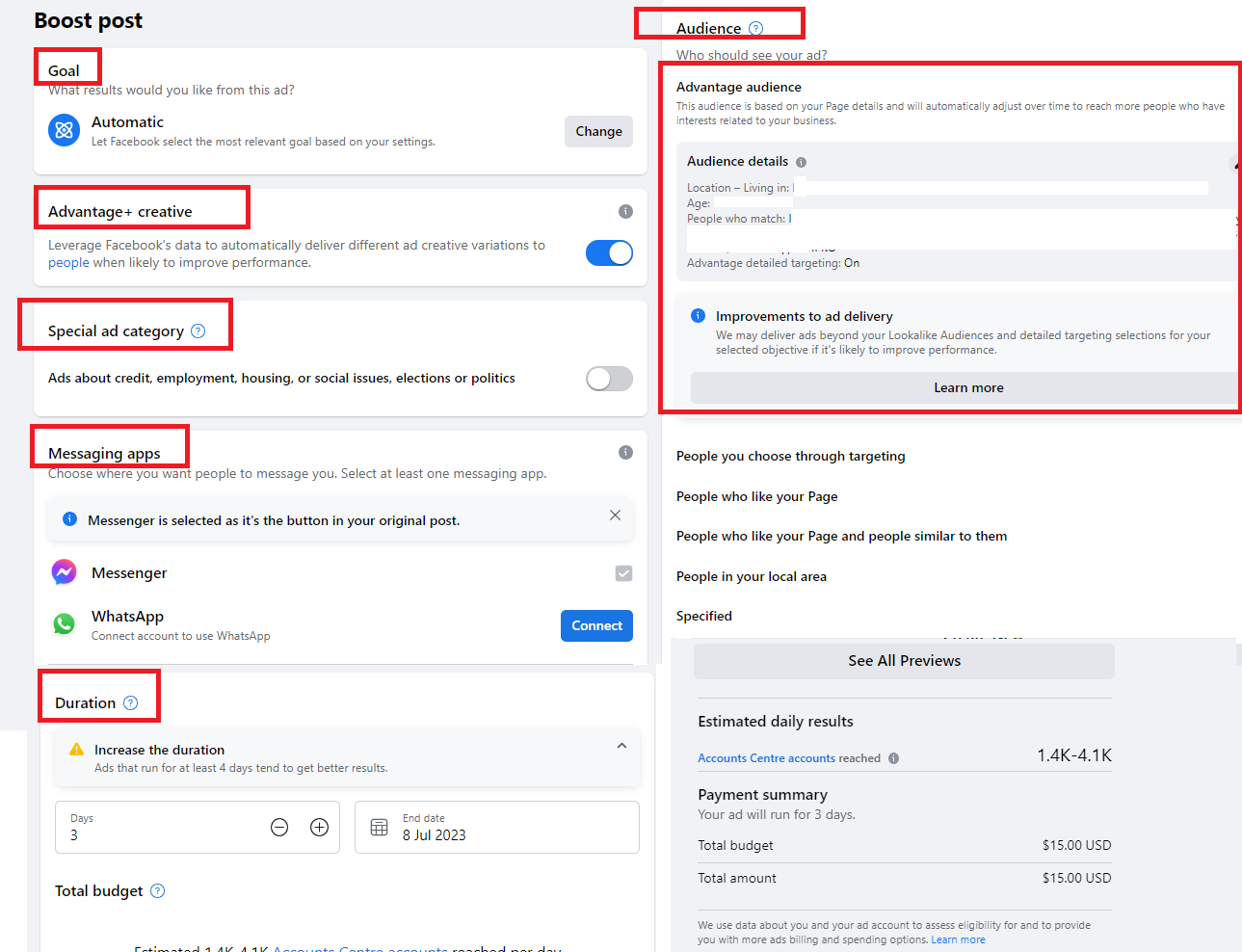
Thus, here’s how to make the most of Facebook ads for your Shopify store:
- Set clear goals: Before creating your ad campaign, define your objectives, whether it’s increasing brand awareness, driving website traffic, or generating direct sales.
- Create compelling ad content: Craft captivating ad copy and use eye-catching visuals to grab users’ attention as they scroll through their feeds.
- Use retargeting: Set up custom audiences to retarget users who have previously interacted with your website or shown interest in your products.
- Optimize for conversions: Use Facebook’s conversion tracking pixel or integrate Shopify with Facebook to measure and optimize for conversions directly.
2. Use Facebook Ads Library to Create Successful Ads
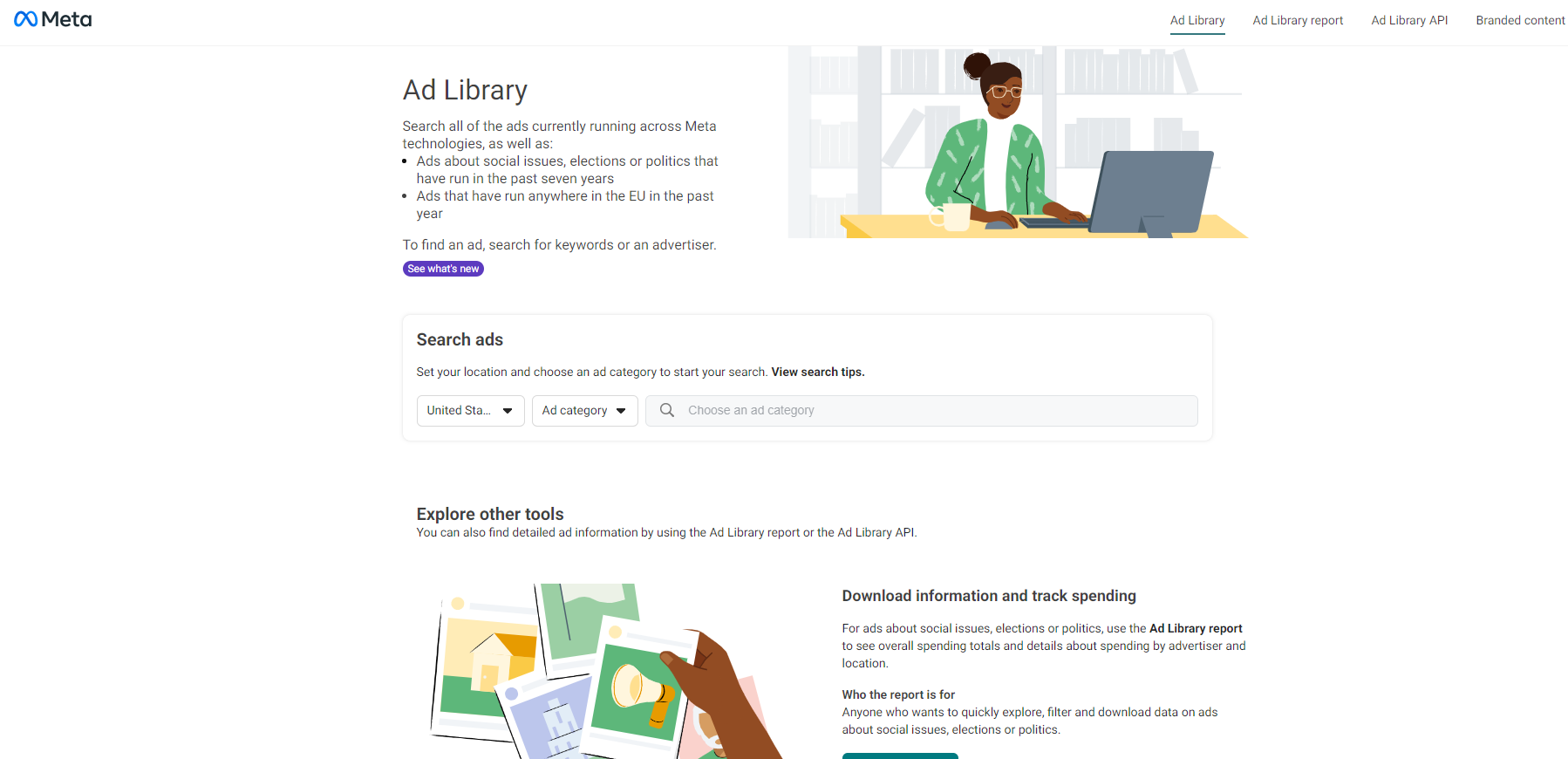
Many beginners don’t know this but you can actually spy on the Facebook ads of Shopify stores.
So, with this Shopify marketing strategy, you can search for any type of product you like, find their ads, and discover what works and how to replicate it with your own unique flair.
Here’s how it works:
- Go to Facebook Ad Library
- Select a country
- Select the type of ads you want to see
- Type in your keyword
- Hit Enter
The main factor you need to look for here is whether an ad is active and how long it has been active.
The longer an ad has been active the more successful it is, obviously. No one will keep their ads active for long periods of time if they’re not making any money.
To see this data, simply click on See ad details under each ad.
3. Engaging Content Creation
In addition to targeted advertising, creating engaging content is crucial for building brand awareness and fostering customer loyalty. Here are some content ideas to consider:
Product showcases
Highlight your best-selling products or new arrivals through visually appealing images or videos.
In fact, today video marketing is getting all the light. So, if you have a more complex product, you can always use videos and how-to-use guides to explain how they work.
For example, Shopify also offers numerous videos to users on how to utilize their features and more. 👇
That’s how Fenty Beauty products gained even more popularity. We all know Rihanna, right? Seeing her use her own Fenty products in real life really grabbed customers’ attention. 👇
Educational content
Share informative blog posts or videos related to your niche that provide value to your target audience.
For instance, I find the Dropshipping.com blog very helpful for learning about every topic about dropshipping.

Hence, you can get valuable information about suppliers, top products, automation tools, how-to-use guides, and more.
So, you can always start a blog around your own business. Thus, this will lead to more website visitors, and increase the number of potential buyers as well.
User-generated content
Encourage your customers to share their experiences with your products by featuring their testimonials or reviews.
For example, Sephora has a special group called the Sephora Squad. It’s a lively community of storytellers, beauty fans, and artists from different backgrounds.
To highlight this squad and its amazing members, Sephora features their testimonials on its website.

These testimonials include quotes from current members, sharing why they love being part of this unique community.
Contests and giveaways
Run engaging contests or giveaways on Facebook, or other social media channels. This way you will generate excitement and encourage user participation.
Plus, you will gain more followers that are potential buyers.
4. Use Facebook Groups
Facebook groups offer a unique opportunity to connect with a highly engaged community of like-minded individuals. Moreover, you can leverage Facebook groups for promotion in many ways, like:
- Join relevant groups: Identify groups that align with your target audience and actively participate in discussions to establish yourself as an authority in your niche.
- Provide valuable insights: Share your expertise by answering questions, providing helpful tips, and offering solutions to common pain points.
- Promote selectively: While self-promotion should be kept to a minimum, occasional product recommendations or exclusive offers can be shared with group members who may find them valuable.
For example, I’m a member of a Facebook dropshipping group called Dropshipping.com Community. This gives me access to thousands of members who know tips and tricks that I don’t.
Plus, I share my blog articles, and product recommendations with other users.
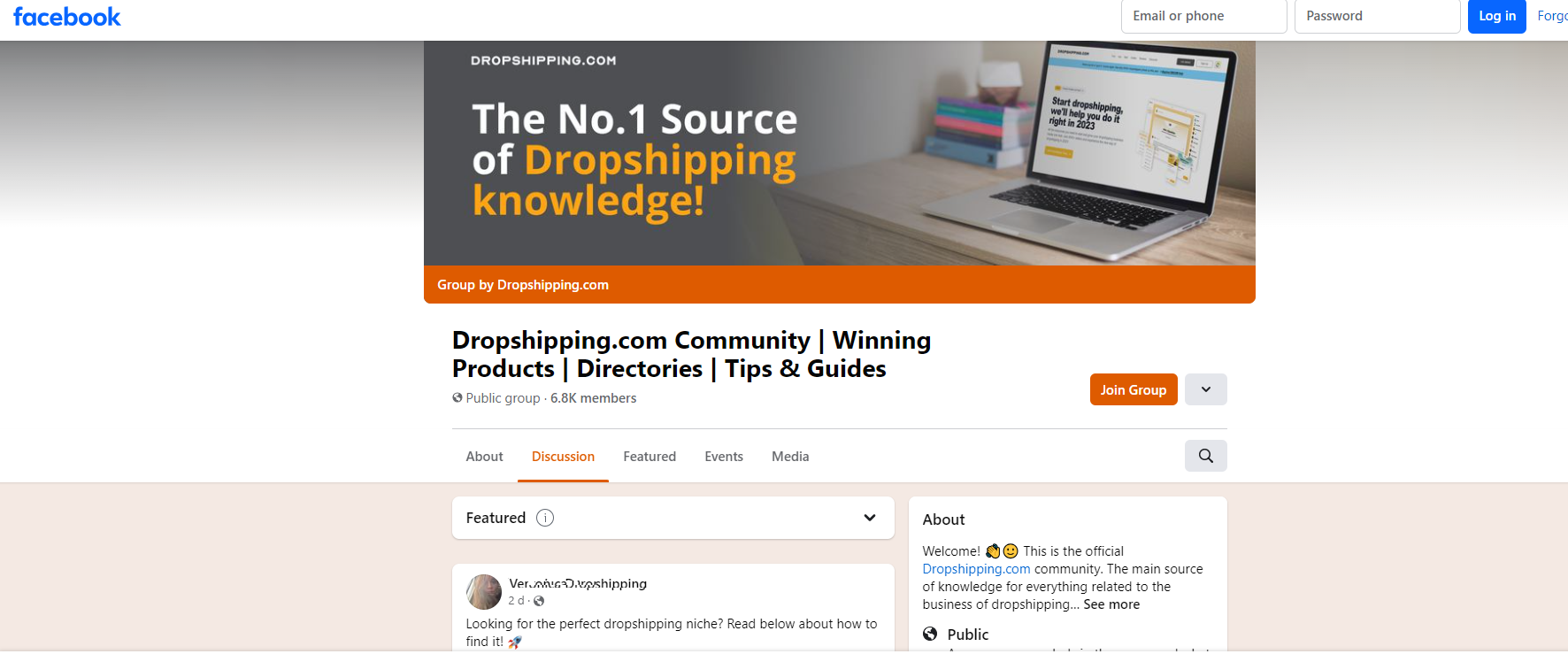
I find it very helpful because I can share experiences with other dropshippers and get instant advice. The people are very friendly and often reply to my comments or send me direct messages.
5. Instagram Marketing for Shopify Stores
Instagram can be a powerful tool for marketing Shopify stores. Here are some key strategies to consider:
Influencer Collaborations
Leveraging influencers with a strong presence on Instagram can significantly expand the reach of a Shopify store.
By partnering with influencers whose audience aligns with the target market, businesses can tap into a ready-made community of potential customers.
For example, I use the HypeAuditor tool to find and check on my selected influencers’ audience and engagement. This gives me useful information, like engagement rate, audience demographics, interests, type, and more. 👇

Visual Content Creation
Instagram is a visual platform, making high-quality and engaging visual content crucial for success.
So, using professional product photography, user-generated content, and visually appealing graphics can help capture the attention of Instagram users scrolling through their feeds.
For instance, I personally find product tags and call-to-action buttons like “Shop Now” really helpful.
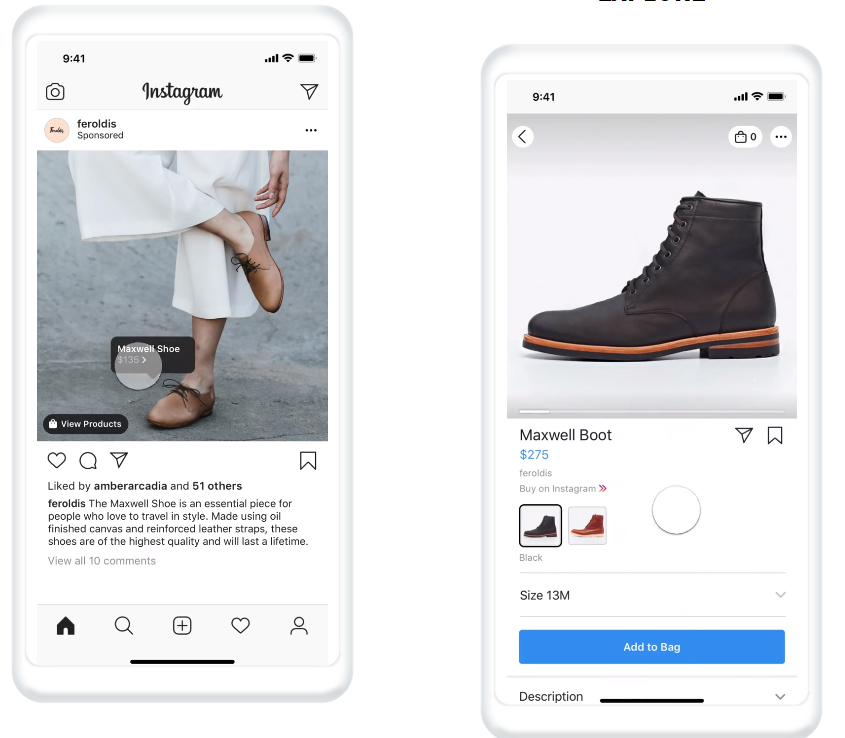
Utilizing Instagram Stories and IGTV
The ephemeral nature of Instagram Stories provides an opportunity for Shopify stores to create a sense of urgency and exclusivity.
By offering limited-time promotions or behind-the-scenes glimpses, businesses can drive engagement and sales.
Additionally, IGTV offers a platform for longer-form video content, allowing brands to showcase their products in more depth and connect with their audience on a more personal level.
By capitalizing on these strategies, Shopify stores can effectively leverage the power of Instagram to boost brand visibility, engage with potential customers, and drive sales.
6. TikTok Marketing for Shopify Stores
TikTok has quickly become one of the hottest social media platforms, with a massive user base and incredible engagement rates.
As a result, it presents a unique opportunity for Shopify store owners to reach a younger demographic and boost their sales.
Here are some key points to consider when utilizing TikTok for marketing your Shopify store:
Harnessing TikTok trends
TikTok is all about trends and challenges that go viral within its community. By staying up-to-date with the latest trends and adapting them to showcase your products or services, you can tap into the platform’s immense potential.
For example, if there is a popular dance challenge on TikTok, you can create a video featuring your products while incorporating the dance moves.
Moreover, I advise you to consider using popular TikTok sounds that can make your videos go viral.
So, search using keywords like “viral sounds,” “TikTok sounds,” or other related terms. The platform itself will also give you helpful search suggestions to refine your queries.
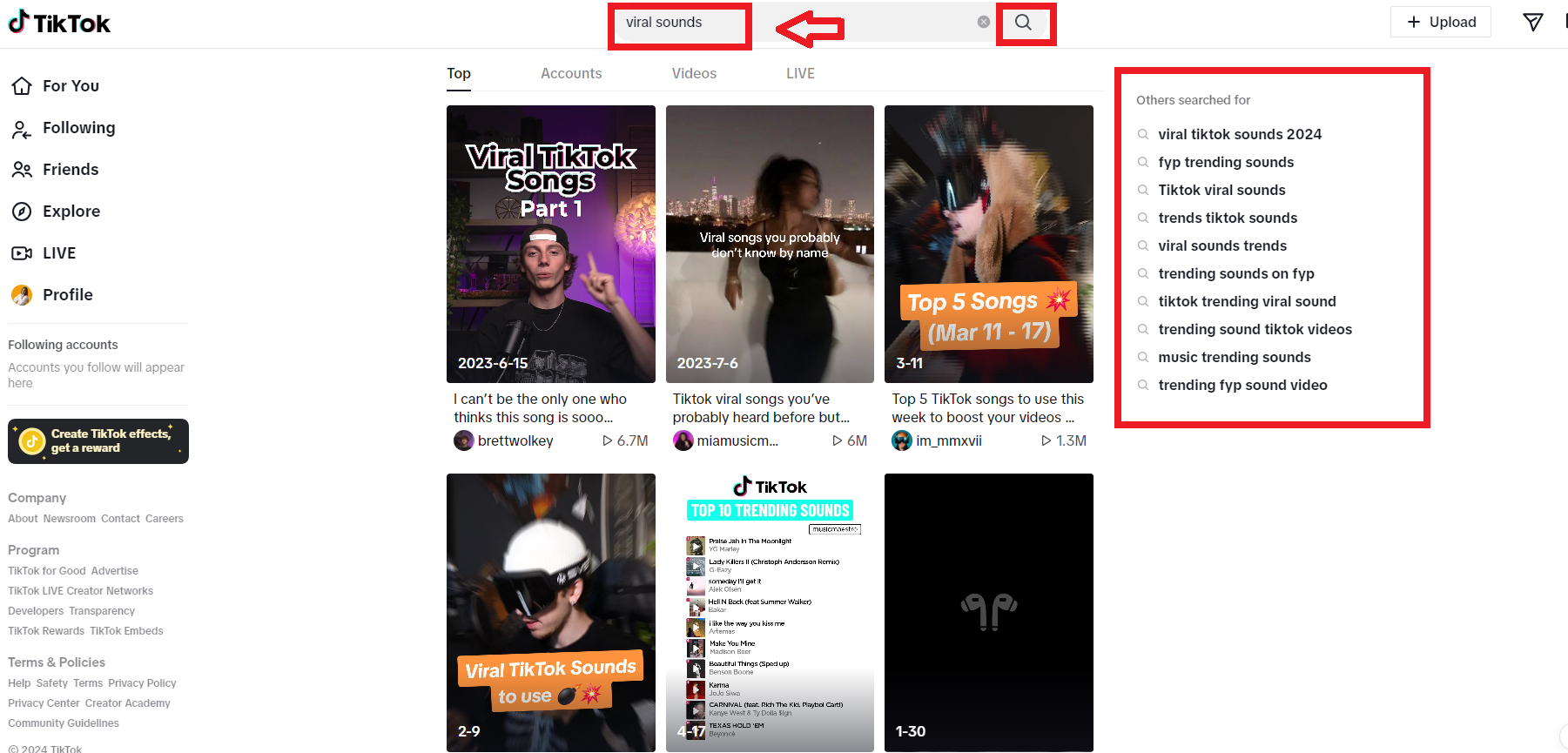
By incorporating these tips, you can gather engaging data and stats to enhance your blog articles.
Working with influencers
Influencer marketing plays a significant role in the success of many brands on TikTok.
Partnering with popular influencers in your niche can help you reach a wider audience and build trust with potential customers.
Look for influencers who align with your brand values and have an engaged following to ensure maximum impact.
Creating compelling videos:
TikTok is a highly visual platform, so it’s crucial to create eye-catching and engaging videos that capture the attention of viewers.
Use high-quality visuals, creative storytelling techniques, and catchy music to make your content stand out.
For instance, you can experiment with different video formats such as tutorials, behind-the-scenes glimpses, or user-generated content to keep your audience entertained.
👉 Check out my Billo Review: The Best UGC Video Marketplace For Dropshippers.
Showcasing products:
TikTok offers various features like shoppable tags and links in the bio that allow you to showcase your products directly within the app.

Make use of these features to drive traffic to your Shopify store and encourage conversions. Additionally, consider running promotional campaigns or offering exclusive discounts for TikTok users to incentivize purchases.
By leveraging TikTok’s popularity and unique features, Shopify store owners can tap into a vast pool of potential customers. Remember to stay authentic, creative, and consistent with your TikTok marketing efforts to maximize your reach and drive more sales.
7. Email Marketing for Shopify Stores
Email marketing is a powerful tool for Shopify store owners to engage with their audience and drive sales.
Building an Email List
Building a solid email list is crucial for reaching potential customers and nurturing existing ones.
So, offering incentives like exclusive discounts or valuable content in exchange for email subscriptions can help grow the list.
Designing Automated Sequences
Setting up automated email sequences allows Shopify store owners to deliver targeted content at the right time.
This could include welcome emails, abandoned cart reminders, order confirmation emails, or personalized product recommendations based on customer behavior.
For example, Airbnb uses attractive order confirmation emails. These emails include an order summary, product or service photos, billing details, and cancellation information. This adds value for customers.

👉 Read about Dropshipping Email Marketing: 16 Best Email Marketing Tools For Shopify.
Personalization Strategies
Personalizing email content based on customer preferences, purchase history, and browsing behavior can significantly improve engagement and conversion rates.
Using dynamic content and segmentation techniques can make emails more relevant to individual recipients.
By implementing these email marketing strategies, Shopify store owners can create meaningful connections with their audience and drive sales effectively.
For example, my top choice for email marketing and sending newsletters is Klaviyo. This tool seamlessly pulls data from your online store and is a standout in the email marketing space. 👇

Send Automated Email Sequences to Your Visitors
Email marketing allows you to send promotions and various offers to highly targeted visitors who have given you their email. This method of Shopify marketing is completely free, as all you have to do is write the emails and send them out.
Then, you can get hundreds or even thousands of eyes on your products based on how many emails you’ve collected.
So, here’s why you should never overlook email marketing as a highly effective Shopify marketing strategy.
- Half of the world’s population uses email
- Abandoned cart emails significantly decrease the number of your abandoned carts and increase conversion rates
- The ROI of proper email marketing is well over 1000%.
👉 Learn How To Pause Or Cancel Shopify Subscription? [2024].
At the start, you should focus on structuring and sending out the following types of emails:
- First Email: This is also known as the Welcome Email. It increases user engagement by up to 500%. Send your prospects a simple email welcoming them to your store, brand, and community. Maybe even offer a free gift or discount code.
- Discount Email: This type of email should contain a list of products that are currently discounted only for the recipients of this email. You can also add a bonus discount code that ends soon to entice prospects to hurry up and buy.
- Referral Email: This is where you can introduce your referral program to everyone on your email list. It’s a free way to get as many people as you can to sign up for the program and start making money.
- Abandoned Cart Email: The purpose of this email is to remind those visitors who’ve reached checkout but didn’t go through with it that they can still buy their items. According to Klaviyo’s research, the success rate of abandoned cart emails that include a coupon code is over 40%.
8. Using Google Ads to Market Your Shopify Store

Google Ads is a powerful tool for driving targeted traffic and increasing sales for your Shopify store.
With the right strategies and techniques, you can reach potential customers who are actively searching for products or services like yours. Here’s how you can make the most of Google Ads:
1. Conduct Keyword Research
Find out what keywords your target audience is using to search for products or services like yours.
This will help you create ads that appear when people search for those specific keywords.
So, tools like Google Keyword Planner or SEMrush can assist you in finding high-volume, low-competition keywords that are relevant to your business.
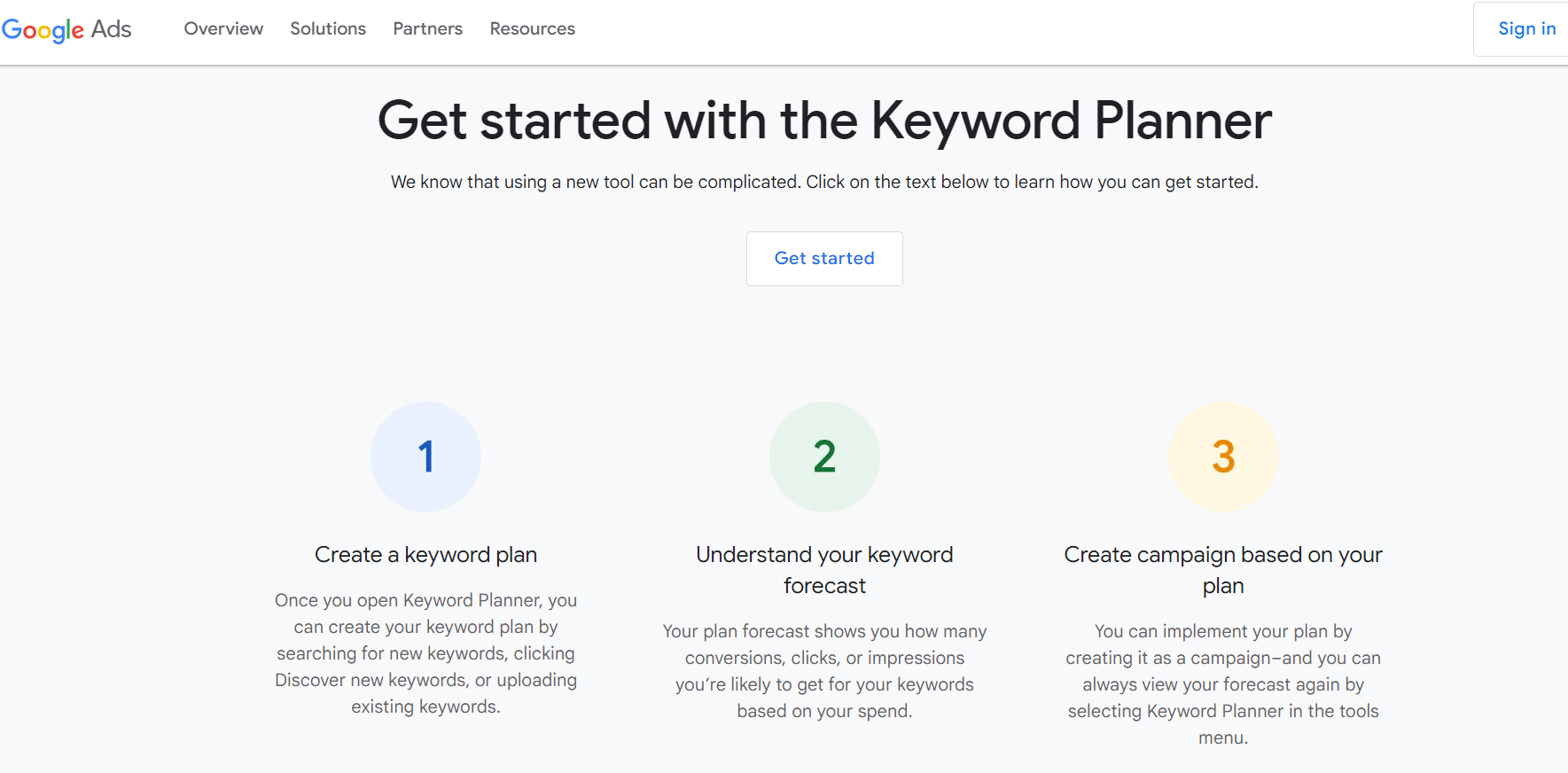
2. Organize Your Campaigns
Create separate ad groups within your Google Ads campaigns based on different product categories or themes.
This allows you to tailor your ads and landing pages to specific customer interests, increasing their relevance and effectiveness.
3. Create Compelling Ads
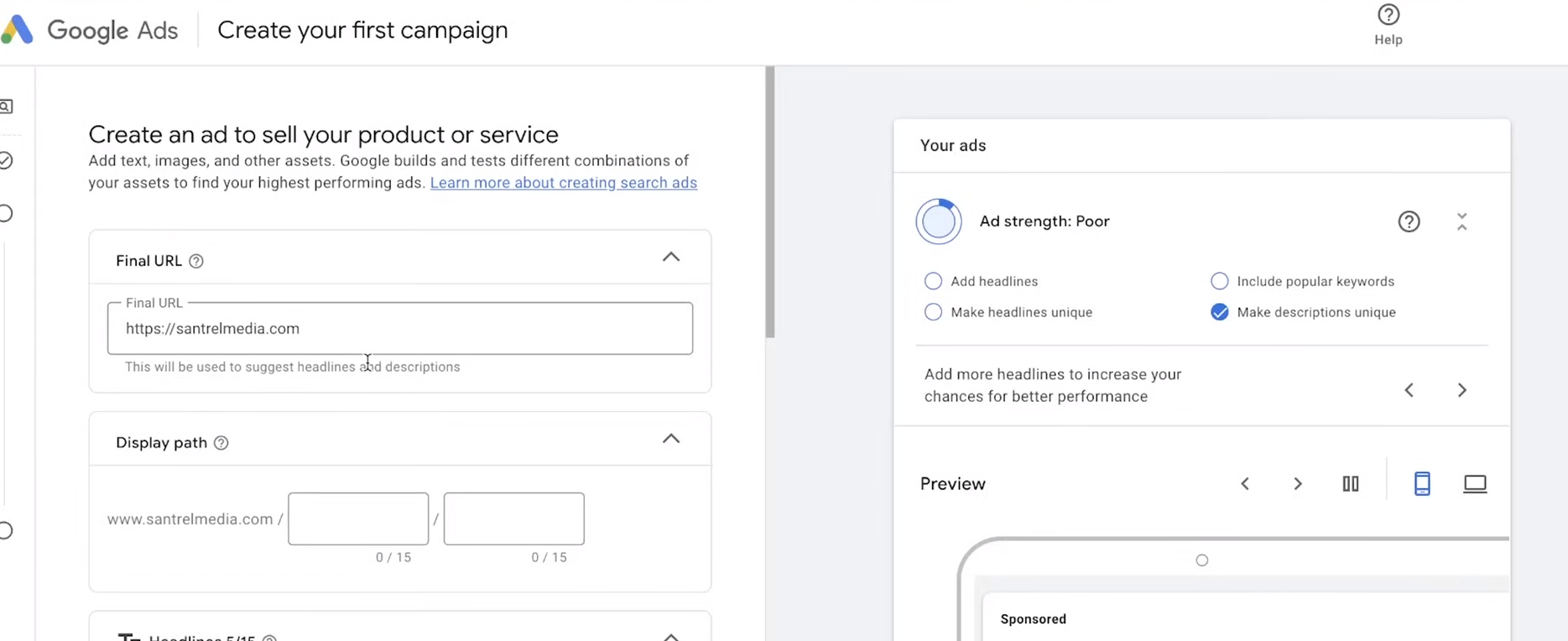
Write compelling ad copy that highlights the unique features or benefits of your products or services.
Thus, use ad extensions like site link extensions, callout extensions, and structured snippets to provide additional information and make your ads more appealing.
4. Optimize Your Landing Pages
Create dedicated landing pages for each campaign, focusing on the keywords and messaging used in your ads.
Also, make sure these pages load quickly, have clear calls to action, and provide detailed information about the product or service being advertised.
For example, I find Watch Gang landing pages really inspiring. First, the homepage features a balanced design, allowing customers to see the products and read a short, engaging description simultaneously.
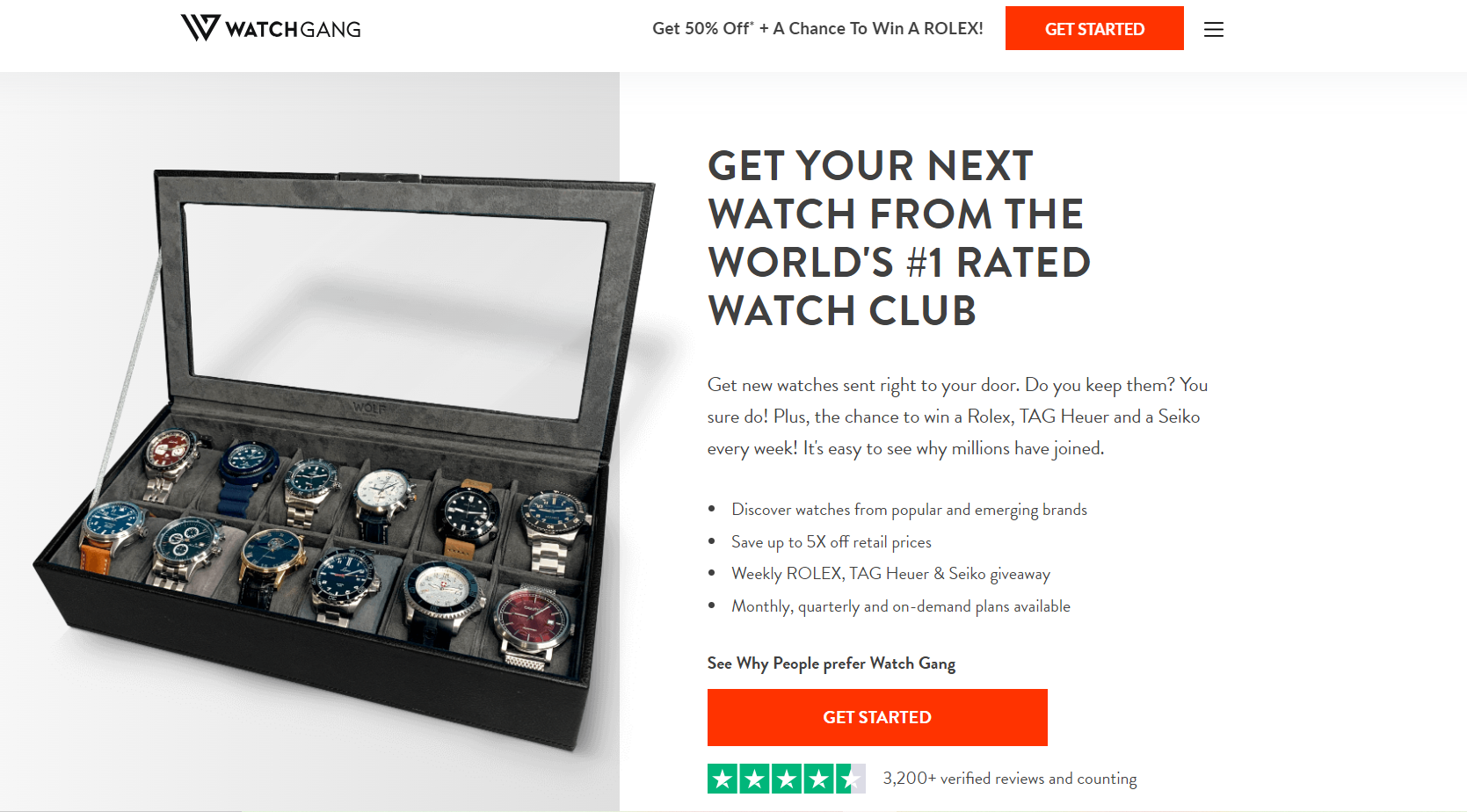
Additionally, the pages have call-to-action buttons highlighted with eye-catching colors, drawing users’ attention and prompting them to take action.
I also appreciate their creative and intriguing headlines. Plus, there’s a clear and contrasting CTA button on the page that stands out.
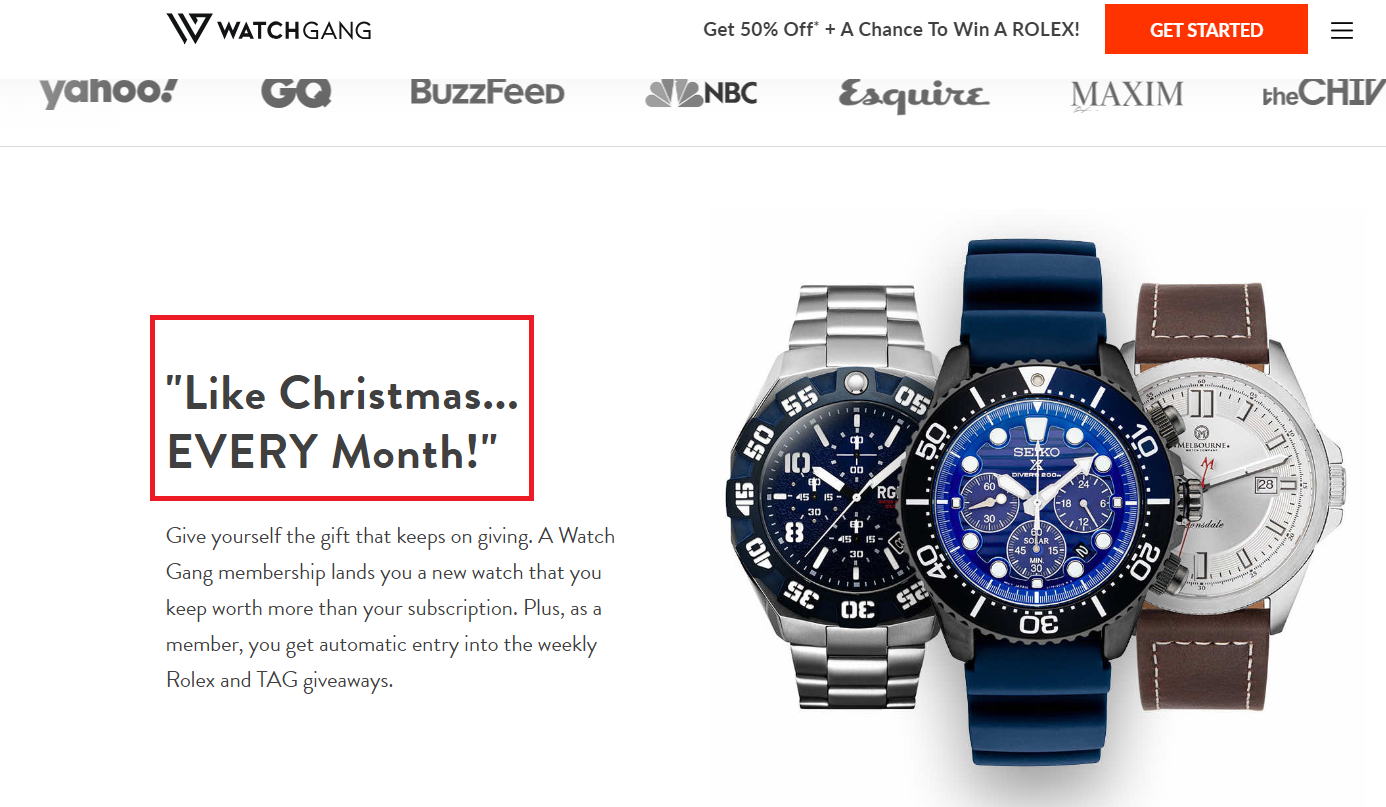
5. Track Conversions
Set up conversion tracking in Google Ads to measure the number of people who complete desired actions on your website, such as making a purchase or filling out a contact form.
This data will help you understand which keywords and ads are driving the most valuable traffic to your site.
6. Analyze Performance
Regularly review the performance of your Google Ads campaigns to identify areas for improvement.
Look at metrics like click-through rate (CTR), conversion rate, and return on ad spend (ROAS) to see how well your ads are performing. Use this information to make data-driven decisions and optimize your campaigns accordingly.
Remember, successful Google Ads marketing requires continuous monitoring and optimization.
So, stay updated with the latest trends and best practices in online advertising, and be willing to experiment with different strategies to find what works best for your business.
By using Google Ads effectively, you can connect with potential customers when they’re actively searching for products or services like yours, driving targeted traffic to your Shopify store and increasing sales.
9. Pinterest Marketing for Shopify Stores
Pinterest is a visual discovery platform that offers great marketing potential for Shopify stores. With its focus on images and inspiration, Pinterest provides an excellent opportunity to showcase products and drive traffic to your store. Here are some key strategies for leveraging Pinterest marketing for your Shopify business:
Creating visually appealing pins
Pinterest is all about eye-catching visuals, so make sure your product images are high-quality and visually appealing.
So, use professional product photography or create compelling graphics that catch the attention of users scrolling through their feeds.
For example, Whole Foods is great at using Rich Pins on Pinterest for e-commerce.
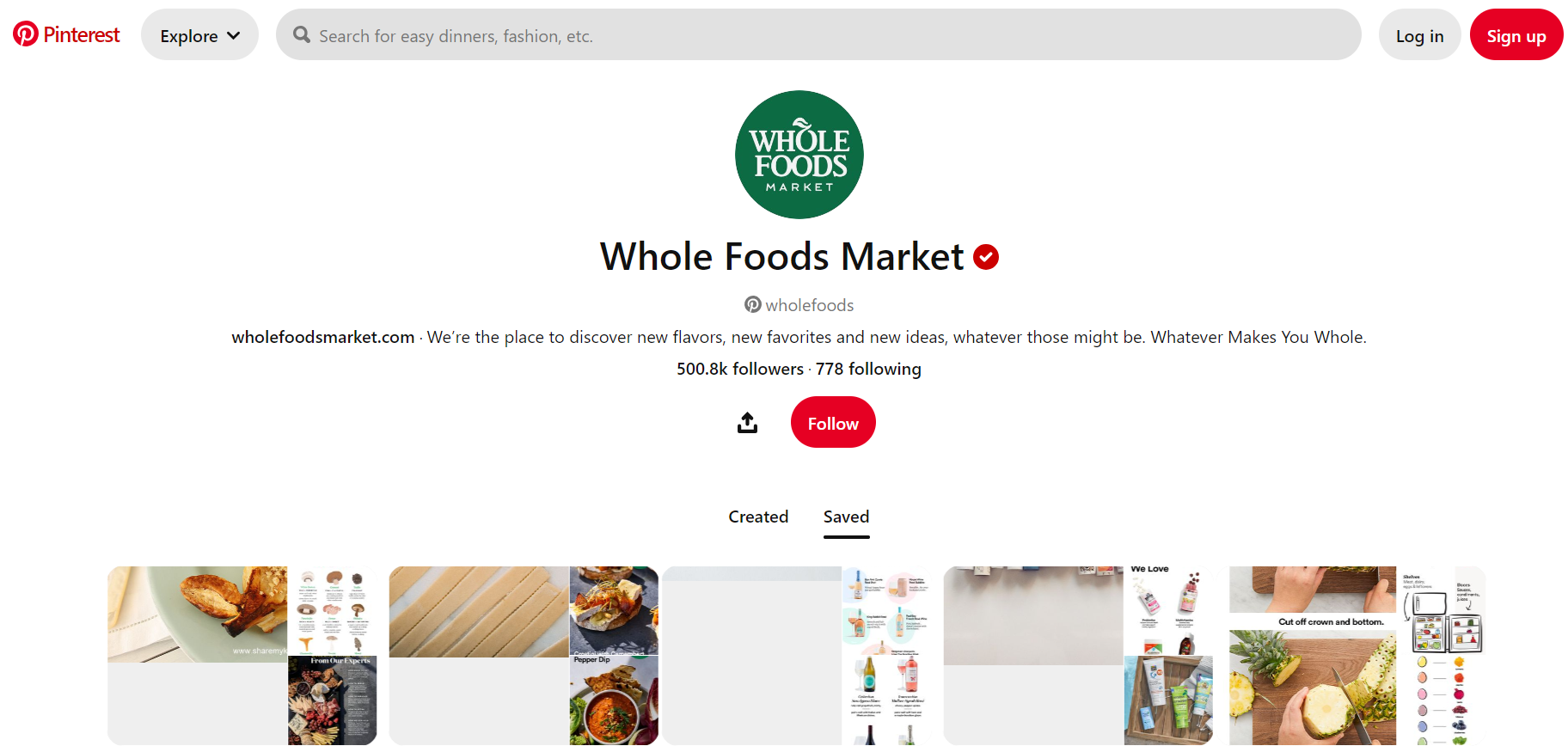
As a health-focused supermarket, Whole Foods uses Rich Pins to add more details to its posts, which helps with SEO on Pinterest.
These pins let the brand share cooking tips, show real-time product availability, and link to their blog posts. Rich Pins can also drive app downloads, link to articles, or direct users to products that are in stock.
Leverage keywords and hashtags
Like other social media platforms, Pinterest relies on keywords to help users discover content.
Hence, optimize your pin descriptions with relevant keywords that align with your target audience’s interests and search queries.
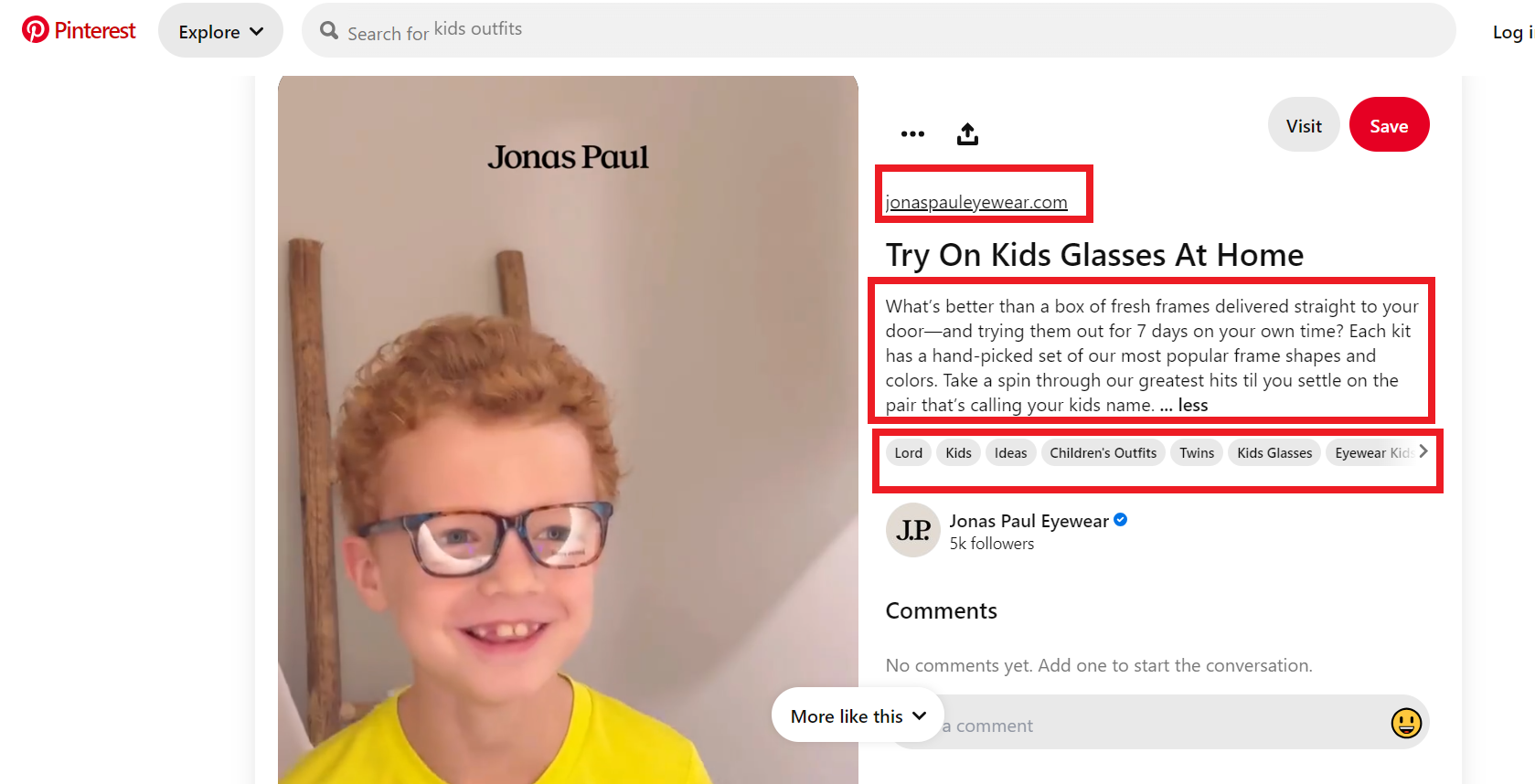
Additionally, using relevant hashtags can expand the reach of your pins and increase visibility.
Use group boards
Group boards on Pinterest are collaborative spaces where multiple users can contribute and share pins related to a specific topic or theme.
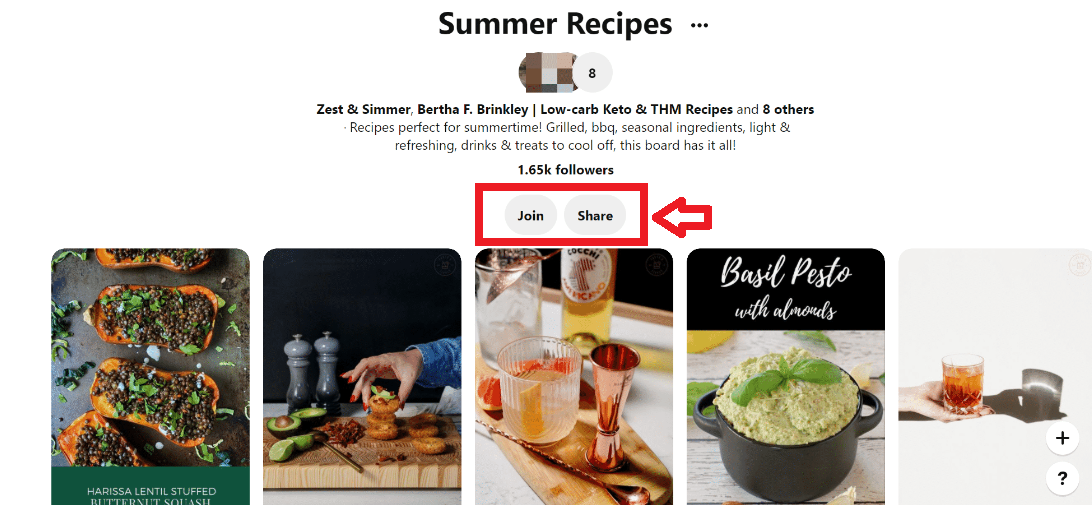
So, joining relevant group boards in your niche allows you to reach a wider audience and gain exposure for your products.
Thus, engage with other members by repinning their content and contributing valuable pins of your own.
🔥 Pro Tip: Consider creating engaging video pins as they tend to capture users’ attention and have higher engagement rates on Pinterest.
Pinterest offers a unique platform for Shopify stores to showcase their products through visually appealing pins.
By leveraging keywords, and hashtags, and participating in group boards, you can increase brand visibility and drive traffic to your Shopify store for potential sales.
10. Always Have an Active Referral Program
Setting up an affiliate link for your dropshipping store basically leads to free money. Usually, there’s no such thing as free money but this is the closest thing to it when it comes to dropshipping.
Here’s how affiliate, or referral links, work:
- Step 1: Install a referral program app on your Shopify store such as Referral Candy
- Step 2: Take 10 minutes of your time to set up a referral program and link
- Step 3: Use this link in your ad offers, on your homepage, on notification pop-ups, in your email marketing campaigns, and basically everywhere you can
💡 Tip: Get inspiration from the 8 Order Confirmation Email Examples & Templates For Ecommerce.
To learn more, don’t miss our extended list of the best marketing apps on Shopify.
It allows other people to sell for you in return for a commission. Even though you get lower dropshipping profits, you still only invested about 10 minutes of your time in this and nothing else.
Plus, this referral program can scale infinitely and start earning you some serious cash all on its own simply by people sharing it with each other.
Both you and your affiliates make money at the same time.
11. Lookalike Audiences Should Be Your Main Goal
If you’re doing Facebook ads for dropshipping, your main goal at first should be reaching the criteria for Lookalike Audiences.
However, in order to be able to create a Lookalike Audience on Facebook, you first need a source audience that has already visited your online store and performed some kind of action (preferably a conversion).
The main goal of Lookalike Audiences on Facebook is to target people who are extremely similar to your existing customers (people who’ve already bought something from you). With this Shopify marketing strategy, your Shopify store will display a towering increase in conversions.
Learn More: How to Find Your Ideal Dropshipping Target Audience
💡 Tip: Read about Shopify vs. Custom Store for Dropshipping – What’s Better & Why?
12. Donate to Charity
Donating some of your earnings to charity is one of the most humble and effective ways to increase your revenue.
It’s a Shopify marketing strategy that involves creating a simple page where you explain that you donate a certain percentage of your monthly earnings to a charity of your, or the community’s choice.
Why is this an effective tactic?
Because lots of people out there like to play some part in helping others. This way, they actually can.
NOTE: You should actually make good on your promise and donate to charities every month. Do not try to scam your customers and keep all of your profits after you’ve made this promise. Eventually, it will come back to bite you.
13. Join Forces With Other Brands
Another highly effective method to get a good boost at the start for your brand is to collaborate with other brands. Ideally, you’ll want to look for brands that are similar to yours. Don’t worry, you don’t have to always be competitive in this line of business.
Here’s how this works.
Initially, you should look for similar brands and contact as many of them as you can to ask for a collaboration.
Then, when you find a positive response, your best choice is to negotiate a revenue share deal. This means that you and the other brand will share the revenue you’ve made during your partnership.
After that, it’s up to you and the other brand to discuss what type of promotions you’re going to do. The most common deal many brands make here is social media giveaways.
A great real-life example of this strategy is the collaboration between GoPro and Red Bull. These two brands teamed up for the “Stratos” event, where Felix Baumgartner jumped from the edge of space.
GoPro provided cameras to document the jump, while Red Bull promoted the event extensively.
This collaboration allowed both brands to reach a wider audience, sharing the excitement and benefits of the event, and significantly boosting their visibility and engagement.
14. Create and Automate a Sales Funnel
E-Commerce sales funnels are among the best ways to automate your money-making process. They involve crafting an automated process that takes your visitors from simple spectators to buyers.
Follow these steps to create a simple sales funnel that can do all the selling for you.
This funnel is divided into three steps.
First, you must grab the attention of visitors. This is usually done through very enticing ad headlines or ad creatives. In this first step, you don’t sell anything. You just entice and inspire any visitors to want to learn more about your product.
Second, you show them all the ways your product will make their lives better. This is done on the landing page in your store. After they click on your ad, they will be taken to your landing page where you convince them to buy the product.
This is a simple guide explaining how to create a high-converting dropshipping landing page. Make good use of it!
Finally, the last step involves the product page where it’s finally time to purchase the product. You must carefully construct your product page with stunning product images, product descriptions, dropshipping videos, benefits, lists, gifs, and everything else you can to make sure everyone who reaches this far buys the product.
Learn More: How to Write Effective Product Descriptions.
15. Do Revenue Shares With Influencers
This Shopify marketing strategy is the cheapest one here. It doesn’t require any budget whatsoever but it does require a bit of time at the start.
The plan is the following:
- You find established influencers on Instagram or TikTok within your niche
- You contact as many of them as you can, proposing a revenue share deal
A revenue share deal is basically you asking them to promote your product for free and taking a percentage of what they end up earning you. You don’t pay anything upfront and are still left with decent profits without spending a single cent.
👉 Learn How to Remove ‘Powered by Shopify’ – Short Guide.
Strategies for Expanding Product Offerings and Entering New Markets
Once you’ve set up your initial marketing strategies, it’s time to think about how you can grow your Shopify business in the long run.
So, expanding your product offerings and entering new markets can help you reach a wider audience and increase your sales potential.
Here are some strategies to consider:
- Product Diversification: Explore new product categories or variations that align with your target audience’s needs and preferences. Conduct market research, analyze trends, and gather customer feedback to identify opportunities for expansion.
- Collaborations and Partnerships: Form strategic partnerships with complementary brands or influencers in your niche. By collaborating on joint promotions or co-creating products, you can tap into each other’s existing audiences and expand your reach.
- International Expansion: Consider expanding your business internationally by targeting new markets. Research local preferences, adapt your marketing strategies to cater to different cultures, and optimize your website for multiple languages and currencies.
- Wholesale Opportunities: Explore options for selling your products wholesale to other retailers or businesses. This can help you reach a larger customer base and increase brand exposure.
1. Leverage Automation Tools to Handle Growth
As your business grows, it’s important to find ways to work smarter, not harder.
This means using automation tools to streamline processes and handle increased demand efficiently.
Therefore, here are some automation strategies to implement:
Inventory Management
Use inventory management software to track stock levels, automate reorder notifications, and prevent stockouts or overselling. This ensures smooth operations and minimizes customer dissatisfaction.
For instance, Inventory Source is a complete solution that helps you find dropshipping suppliers and simplify your operations. This platform is known as a top choice for automating dropshipping tasks.

It’s also a powerful tool for managing inventory and processing orders. Additionally, it gives you access to many suppliers and automatically uploads products to your online store.
Order Fulfillment
Consider using fulfillment services or dropshipping suppliers to handle order fulfillment. Thus, this allows you to focus on core business activities while ensuring timely delivery and customer satisfaction.
In addition, AutoDS can help you with order fulfillment by automating the entire process, ensuring that orders are processed quickly and efficiently.
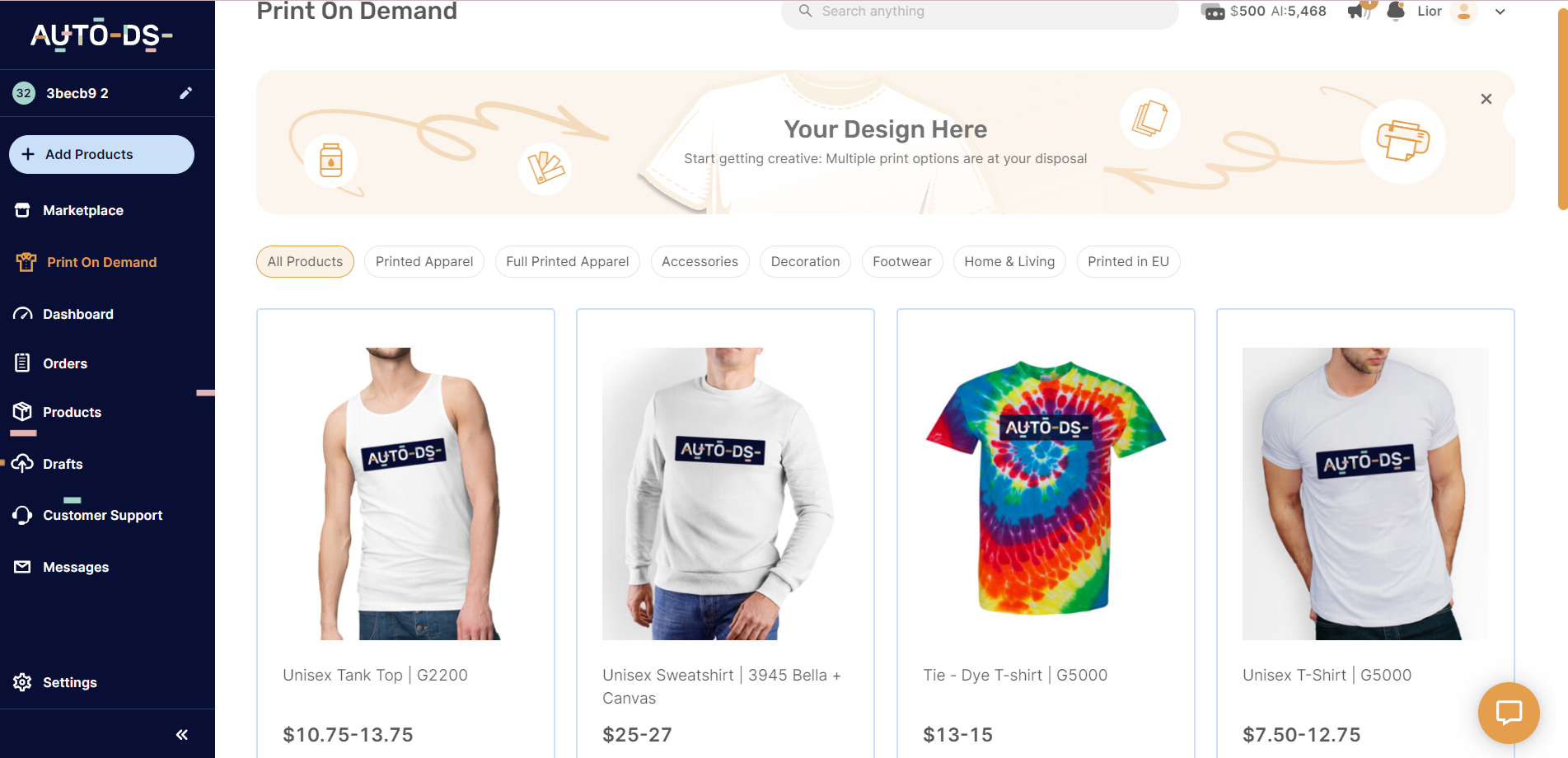
It manages inventory, tracks shipments, and updates your store with real-time information, saving you time and reducing errors.
Customer Support
Implement chatbots or automated email responses to handle common customer queries and provide instant support. This frees up your team’s time to focus on more complex customer issues.
For example, Zendesk uses AI to automate responses to common customer inquiries, route tickets to the appropriate support agents, and provide instant answers through chatbots, enhancing efficiency and customer satisfaction.

Marketing Automation
You can use email marketing automation tools to set up personalized email sequences, abandoned cart reminders, and targeted campaigns.
Thus, automation helps nurture leads and build customer loyalty without requiring manual intervention.
So, I highly recommend you to check out the 16 Best Marketing Apps On Shopify In 2024.
2. Customer Retention and Community Building
While it’s important to focus on acquiring new customers, it’s equally important to nurture your existing ones. Customer retention and community building are key drivers of long-term success for any business.
So, here are some strategies to consider:
- Loyalty Programs: Implement a loyalty program to reward repeat customers and incentivize brand advocacy. Offer exclusive discounts, early access to new products, or special perks for loyal customers.
- Personalized Communication: Use customer data and segmentation techniques to personalize communication with your audience. Send targeted emails based on their purchase history, preferences, or browsing behavior to foster a deeper connection.
- Community Engagement: Build a community around your brand by encouraging user-generated content, hosting events or webinars, and facilitating discussions on social media platforms or forums. Engaging with your community fosters brand loyalty and encourages word-of-mouth referrals.
- Social Responsibility: Showcase your brand’s commitment to social responsibility by supporting charitable causes or environmental initiatives. Customers are increasingly drawn to socially conscious brands, and this can help differentiate your business from competitors.
For example, I personally offer discount codes to your loyal customers. The 60 Seconds app allows me to set special discounts for your customers, making them feel appreciated.
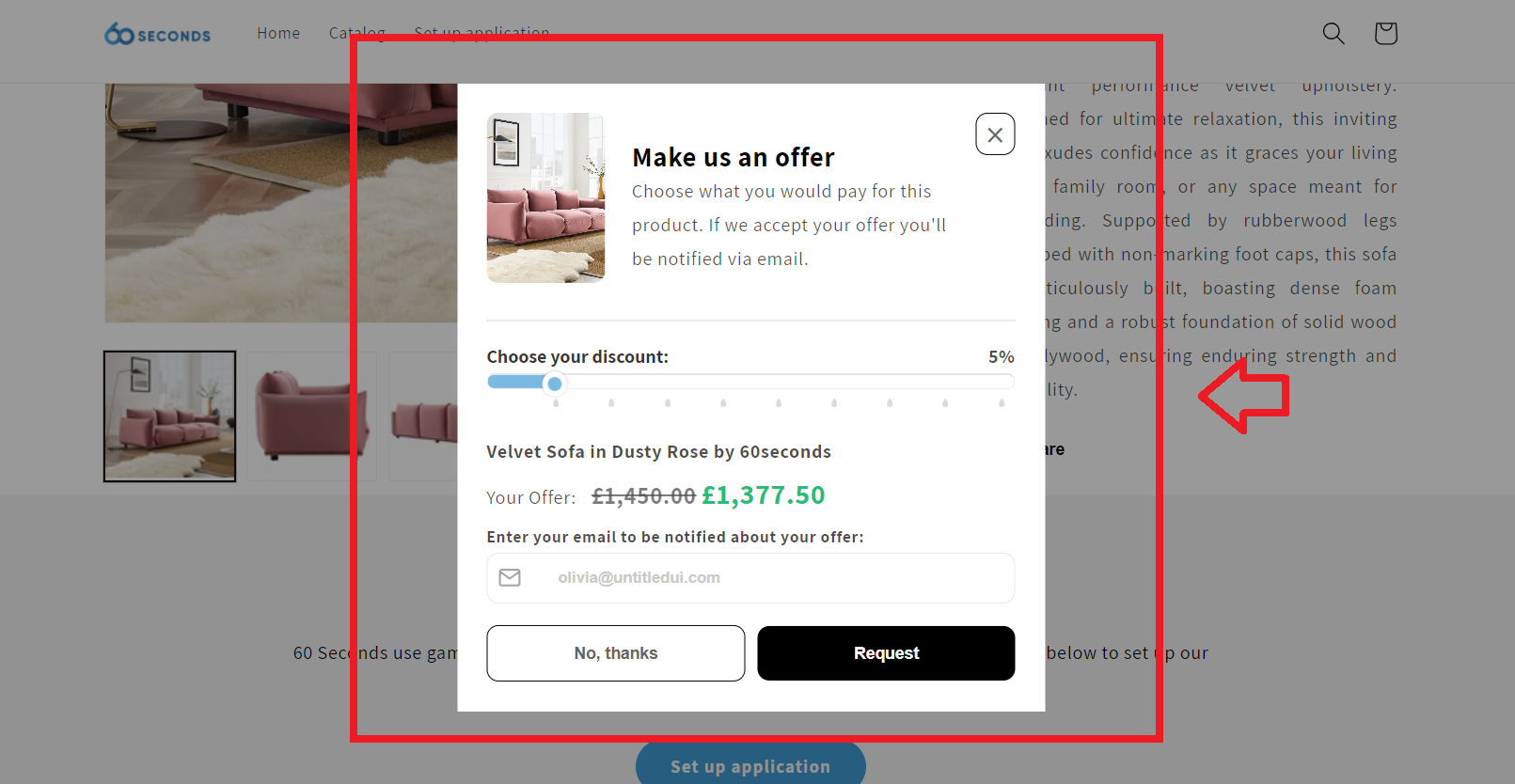
How does it work?
The 60 Seconds discount appears on each product page. Customers can choose their discount and send you a request. You then decide whether to approve the request or not.
Also, I always make sure to give customers various ways to contact me.
For instance, Tidio really helps me synchronize my conversations on all the platforms I use. Plus, with its AI chatbots, it helps me increase my response time, and increase customer satisfaction.

Real Life Examples Of Succesful Shopify Marketing Strategy
To illustrate the effectiveness of these tactics, let’s take a look at some real-life examples:
Example 1: The Gadget Store
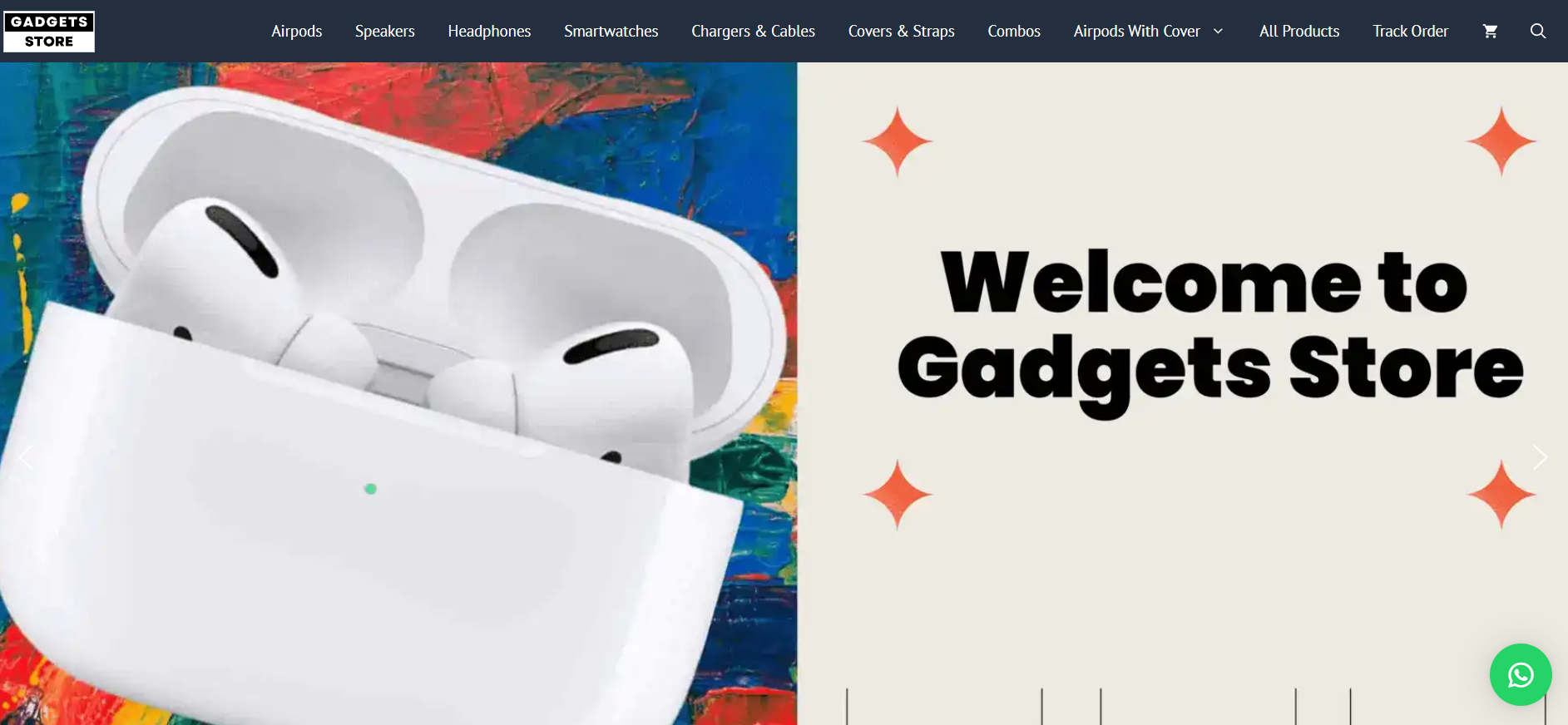
The Gadget Store, a Shopify store specializing in innovative gadgets, utilized Facebook ads to target tech enthusiasts who had previously shown interest in similar products.
By showcasing their unique features through engaging video ads, they were able to achieve a 3x increase in sales within the first month.
Example 2: The Fashion Boutique
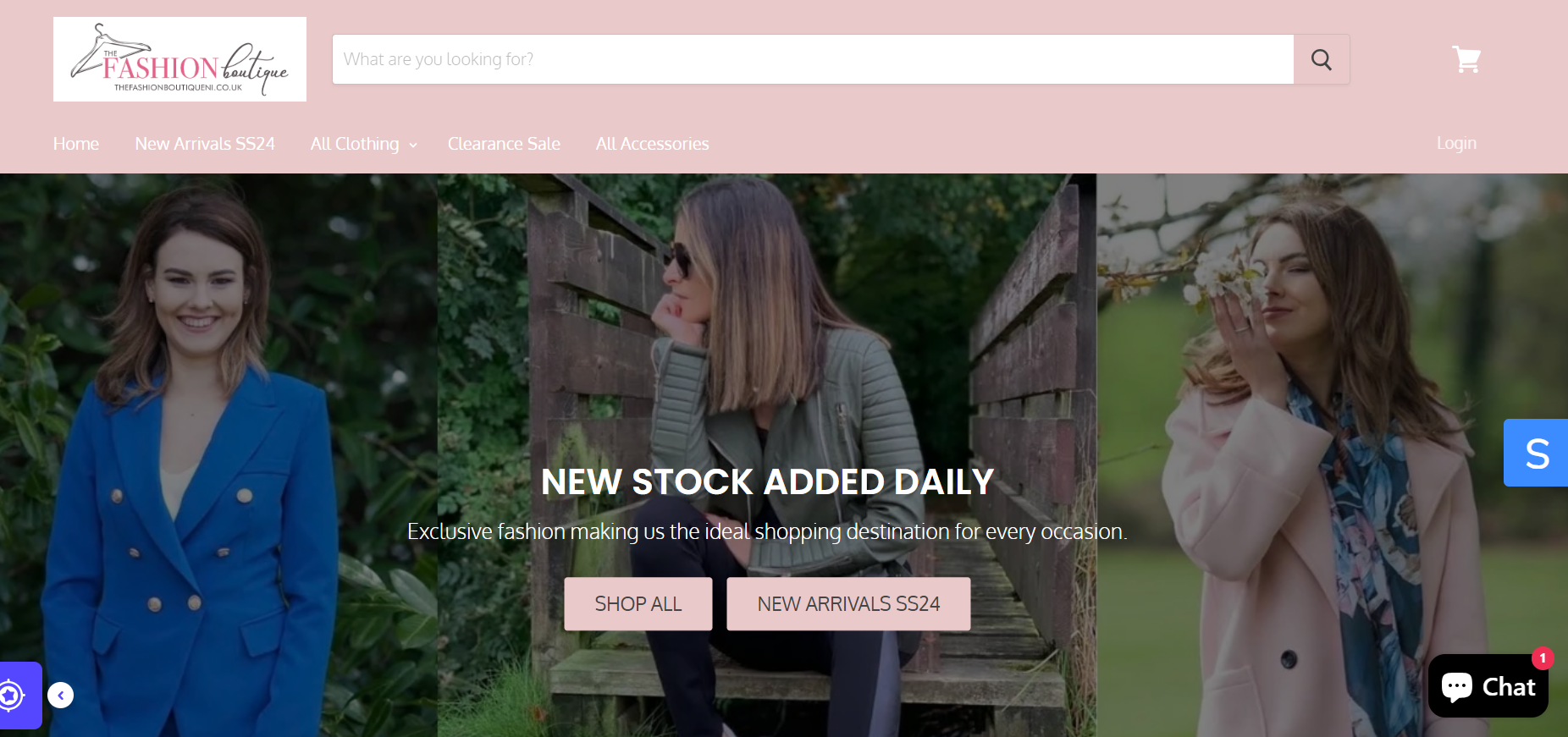
The Fashion Boutique effectively leveraged Facebook groups to grow its brand and connect with customers. Initially, by creating their own group dedicated to fashion tips, trends, and exclusive deals, they provided a platform to share new arrivals, special promotions, and styling advice.
Group members enjoyed being the first to know about sales and events, creating a sense of exclusivity and loyalty.
Furthermore, they engaged with existing fashion-related groups where their target audience was active.
So, by participating in conversations and offering fashion advice, they built a reputation as a helpful and knowledgeable brand, attracting new customers organically.
Moreover, Facebook groups provided a direct line of communication with customers, allowing The Fashion Boutique to gather feedback, understand preferences, and crowdsource ideas for new collections.
This interaction made customers feel valued and strengthened their connection to the brand.
They also hosted virtual events like live styling sessions and Q&A sessions with fashion experts, which kept members engaged and excited about the brand.
In addition, encouraging members to share photos wearing items from The Fashion Boutique created a vibrant and interactive community, serving as authentic testimonials and inspiring others to make purchases.
Why Shopify Marketing So Important? Top Trends & Opportunities
In this section, I’ll explore the future of Shopify marketing and discuss some key trends that businesses should be prepared to embrace in 2024 and beyond.
As technology continues to evolve at a rapid pace, so does the world of marketing.
To stay ahead of the competition, it’s crucial for businesses to stay updated with the latest industry developments and be open to innovative strategies. Here’s why:
✅ Changing consumer behavior
With advancements in technology, consumer behavior is constantly evolving. What worked yesterday may not work today.
So, by staying updated with the latest trends, you can better understand their target audience and tailor their marketing efforts accordingly.
✅ Emerging platforms
New social media platforms and online marketplaces are constantly popping up.
Hence, these platforms often come with unique features and capabilities that can help businesses reach their target audience more effectively.
Therefore, by being open to new strategies, you can take advantage of these emerging platforms and stay ahead of their competitors.
✅ Shifting algorithms
Algorithms used by search engines and social media platforms are constantly changing.
Hence, this can have a significant impact on how businesses’ content is discovered and displayed online.
Therefore, by staying updated with these algorithm changes, you can optimize their marketing strategies and ensure maximum visibility.
✅ Rapid technological advancements
Technologies such as artificial intelligence (AI), virtual reality (VR), and augmented reality (AR) are becoming increasingly prevalent in the marketing world.
These technologies have the potential to completely transform how businesses engage with their customers.
Thus, you can leverage these technologies to create unique and memorable experiences for your audience.
In summary, staying updated with the latest industry developments and being open to innovative strategies is essential for long-term success in the world of Shopify marketing.
Shopify Marketing FAQs (Frequently Asked Questions)
1. What are some pre-marketing foundations that Shopify store owners should consider?
There are numerous marketing tactics that can help Shopify store owners drive sales.
So, here are the ones that helped me increase my sales:
- Setting up a Facebook Business Page: Establish a strong online presence and connect with a large audience.
- Tracking relevant data metrics: Monitor website traffic, conversion rates, and customer acquisition costs using tools like Google Analytics and Ahrefs.
- Establishing a strong brand identity: Define your target audience, create a compelling brand story, and maintain consistent visual branding.
- Building organic traffic through SEO strategies: Optimize your website with relevant keywords, high-quality content, and backlinks to improve search engine rankings.
2. How can Facebook marketing be leveraged for Shopify stores?
Facebook marketing can be leveraged for Shopify stores by creating targeted ads to reach specific audiences based on demographics, interests, and behaviors.
Additionally, using Facebook’s pixel integration with Shopify allows for tracking customer actions, optimizing ad campaigns, and retargeting potential customers who have shown interest in your products.
Engaging with customers through Facebook posts, stories, and groups can also build brand loyalty and drive traffic to your Shopify store.
3. What are some strategies for scaling a Shopify business for long-term success?
To scale a Shopify business for long-term success, expand product offerings, and enter new markets.
So, leverage automation tools to handle growth efficiently.
Also, focus on customer retention by implementing loyalty programs and fostering brand advocacy through community building.
4. What is the future landscape of Shopify marketing and key trends that businesses should be prepared to embrace?
The future landscape of Shopify marketing includes staying updated with industry developments and embracing innovative strategies.
Thus, key dropshipping trends for 2024 and beyond involve personalization, AI-driven marketing, and sustainability practices.
5. What are some key tactics for email marketing specifically tailored for Shopify stores?
Key tactics for email marketing tailored for Shopify stores include building an email list, designing automated sequences, and using personalization strategies to enhance engagement.
6. What is the importance of effective marketing for Shopify stores?
Effective marketing is crucial for Shopify stores as it increases sales and reaches a wider audience.
Thus, implementing strategic marketing tactics can significantly contribute to a store’s success.
Conclusion
Successful Shopify marketing requires a combination of experimentation, adaptation, and continuous learning. Hence, it’s important to implement the discussed tactics and share results for mutual learning and growth.
In the fast-paced world of ecommerce, staying ahead of the curve is crucial for Shopify store owners.
So, by embracing innovative strategies and adapting to emerging trends, businesses can position themselves for long-term success in the ever-evolving landscape of online retail.
The future of Shopify marketing holds endless opportunities for those willing to explore new avenues and push boundaries.
As you navigate through the dynamic realm of digital marketing, remember that there is no one-size-fits-all approach. It’s essential to test, refine, and adapt your strategies based on real-time data and consumer behavior.
I encourage you to implement the tactics and strategies discussed in this article and share your experiences with us.
Thus, your insights can not only contribute to your own growth but also help fellow entrepreneurs navigate their Shopify marketing journey with confidence.
Therefore, let’s build a community of shared knowledge and collective empowerment as we continue to unlock the full potential of Shopify marketing together.













![The Top 21 3PL Companies Compared [2024 List & Guide]](https://images.weserv.nl/?url=https://prod-dropshipping-s3.s3.fr-par.scw.cloud/2024/03/Frame-3922469.jpg&w=420&q=90&output=webp)